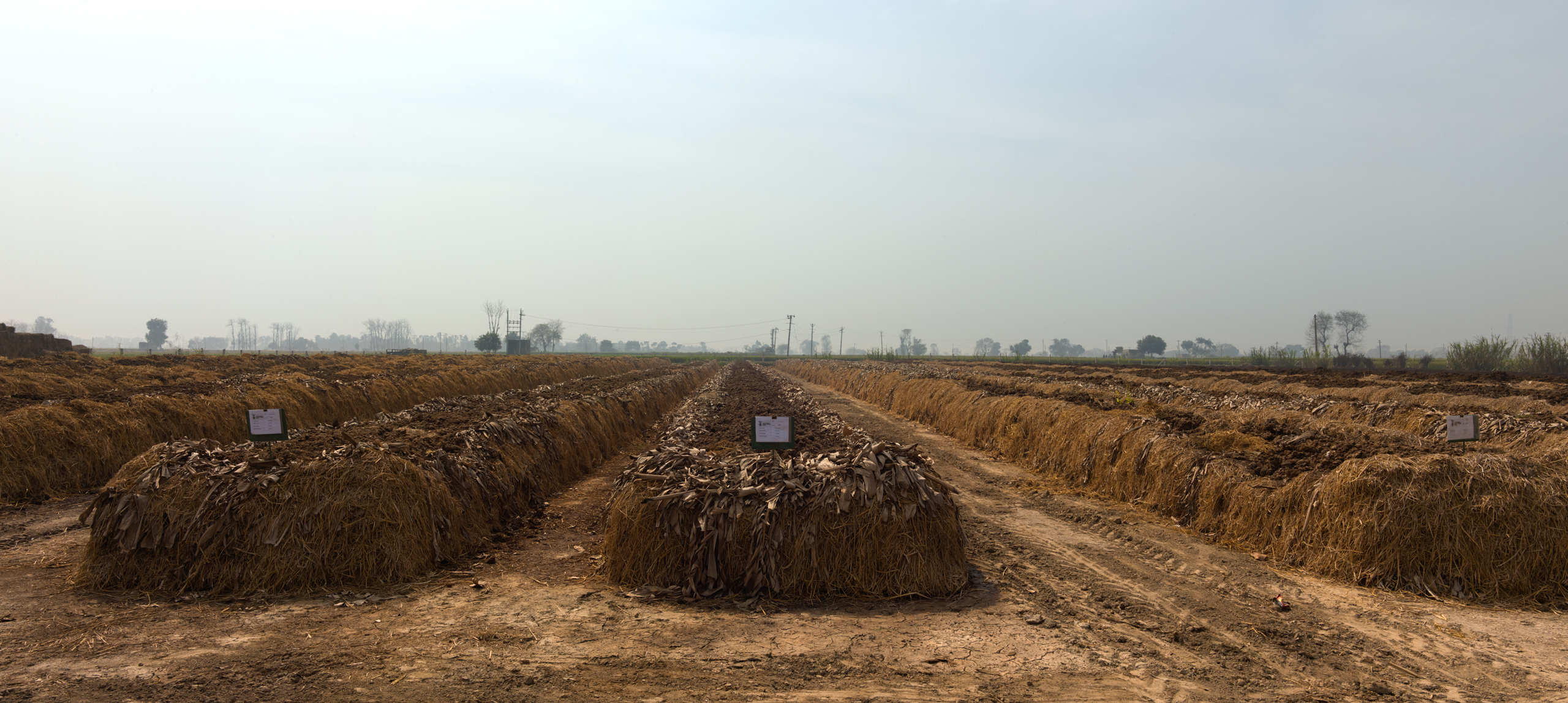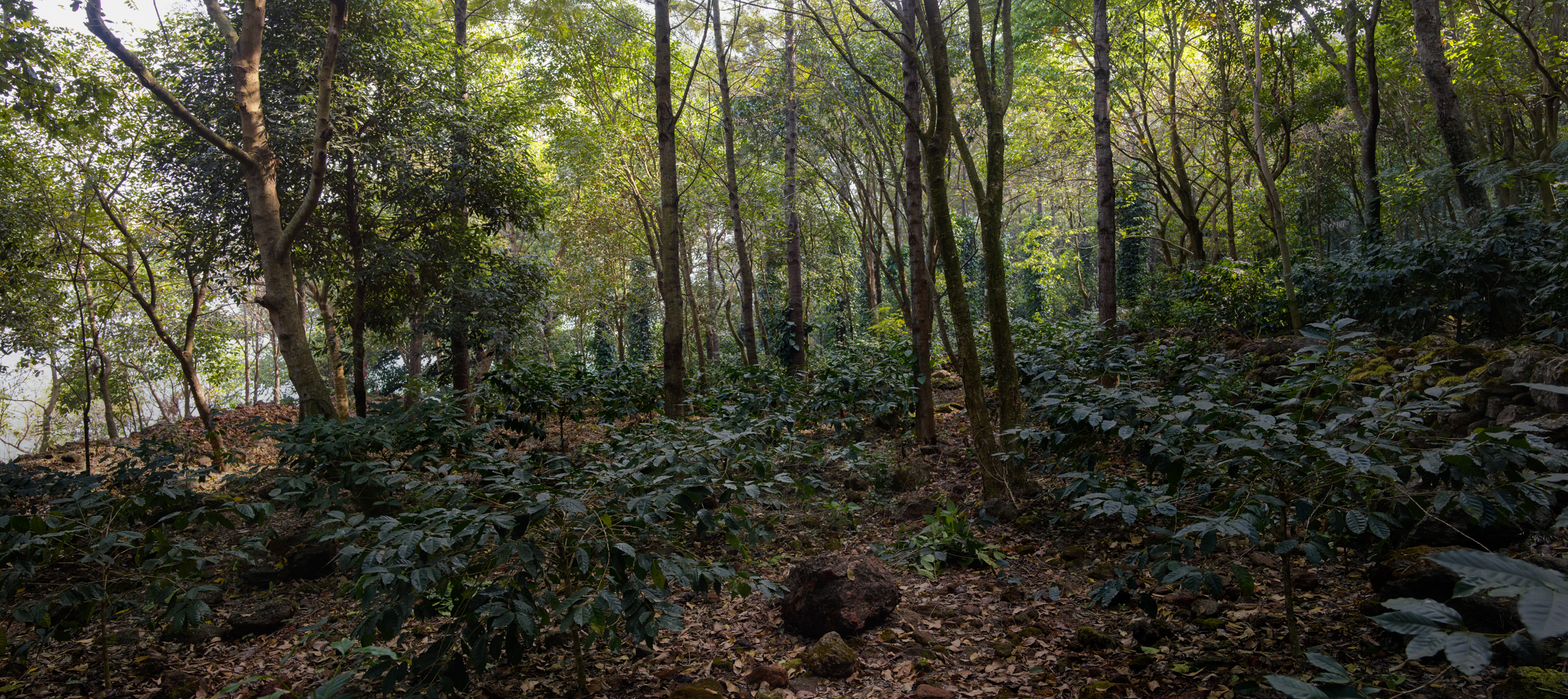
The story of Araku, its coffee and its farmers.
Araku Valley is a hill station in Alluri Sitaram Raju district in the Indian state of Andhra Pradesh, lying 111 km west of Visakhapatnam city. It is a valley in the Eastern Ghats inhabited by different tribes.
We travelled halfway around the world to learn what Arakunomics is, the integrated development concept that has been applied in this part of India by the Naandi Foundation for the past 25 years. More than a hundred thousand people from the most disadvantaged group in the country, the Scheduled Tribes, or Adivasis, previously also called people of the forest, had been lifted out of the worst poverty and deprivation.

People of the Forest
The culture of the Adivasis is strongly linked to their natural habitat, mostly in remote hilly and forested areas. Their name, People of the Forest, refers to their traditional way of life as hunter-gatherers. However, this has become impossible due to deforestation, industrialisation, and climate change in the twentieth century.
Their unskilled attempts at farming yielded little due to the actions of rogue traders and loansharks from outside who exploited the people. They survived largely through barter. What little money there was, they got from the middlemen who lent them money charging very high interest. Problematic debts made life even harder.
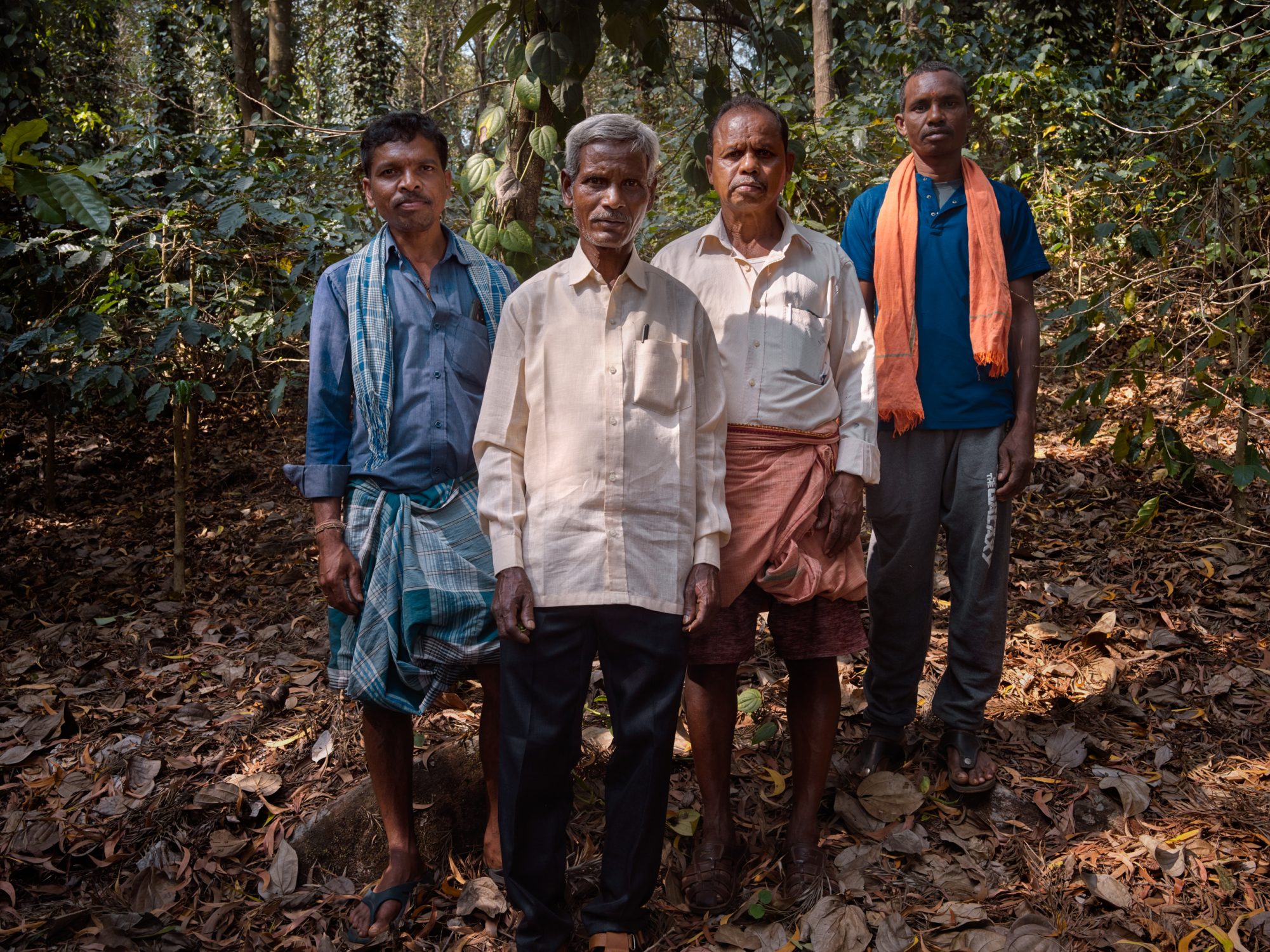
The coffee farmers of Araku
Only 25 years ago there were no roads here, no schools for the children. It was an inhospitable area and closed from the outside world. On paper, that is, according to the 1950 Constitution, the tribes had all kinds of rights, but in practice, little had changed for the better since India’s independence.
Due to the traditional cultivation system of annually clearing forests by burning them to provide land for crops, many primary forests have been lost to erosion. The landscape in which they lived was deforested, and the slopes became drier and barer. The landscape threatened to turn into a desert.
The Naandi Foundation
We meet Manoj Kumar, who travelled here 25 years ago as a young pioneer for the newly established Naandi Foundation. We asked Manoj about the circumstances of those early days.
Arriving in Araku Valley, staying overnight in leaky schoolrooms and trying to gain the trust of the residents, Manoj got deeply impressed by the tribals’ simplicity and hardened survival mentality, their freedom of thought, and strong sense of community. Their resistance to all outside interference seemed to stem from a mixture of a great desire for autonomy and a deep fatalism.
"Money? Oh well, there's no shop anywhere. We do some hunting, we grow rice, and we make our own alcohol. We're okay like that."
But that was 25 years ago. Now the farmers believe in the agricultural method based on cooperation with nature, which works with the rhythms of the sun and moon and regards the soil as a living being. Everyone in the village soon understood that the use of chemicals is bad. It also conflicted seriously with their natural religion. They experienced it can result in wealth.
"In one generation, an atmosphere of fear, fatalism, distrust and malaise has made way for an atmosphere in which eagerness to learn and work ethic are rewarded."
Where thanks to the support of Naandi and the large farmers’ cooperative, some prosperity has come in a way that is based on self-governance and allows the communities to look confidently to the future. Moreover, the slopes are green again, the forest is returning, and millions of new trees are still being planted every year.Thanks to the crops from these functional forests, economic autonomy has been achieved.
The life of the tribals has been modernized; there is running water, electricity and telephone, public health has improved, and there are pensions and insurance.
But all this does not mean that the hill people are forced to give up their communal lifestyle and cultural heritage.
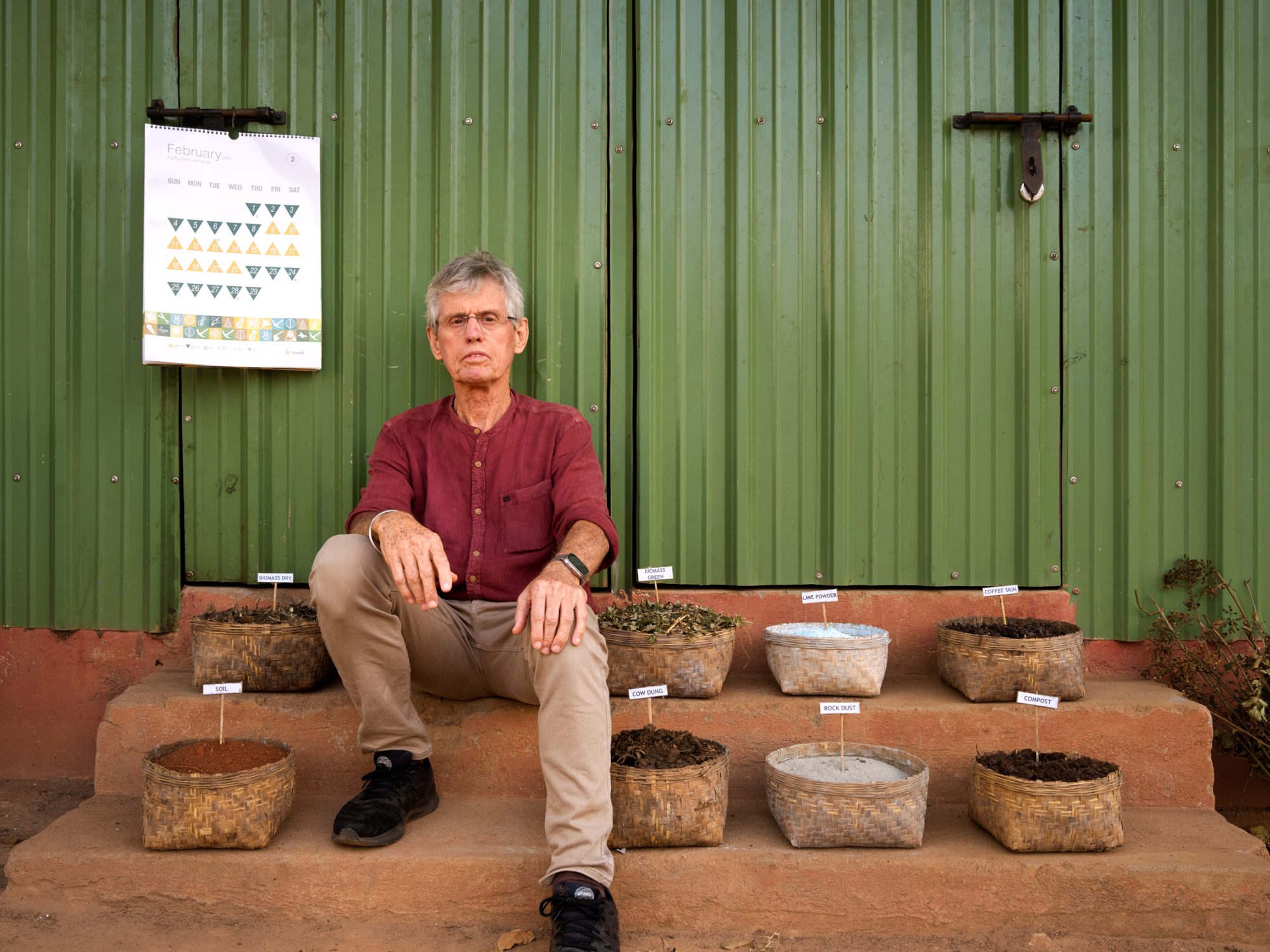
"Araku coffee became the flagship for the community. We developed methodologies for working with food crops, building up the forest again. A journey that we set upon to transform this community that had been so ignored for a century or more."
"For the first time in my life, I began working to scale. Working with hundreds of tons of compost, thousands of tons of compost working with 100,000 smallholder farmers, building up the soil and creating beautiful coffee."
David Hogg
Regenerative Agriculture Advisor
David Hogg came to India as a twenty-year-old and chose to stay. He developed himself into an expert and consultant in regenerative agriculture and joined Naandi in 2009.
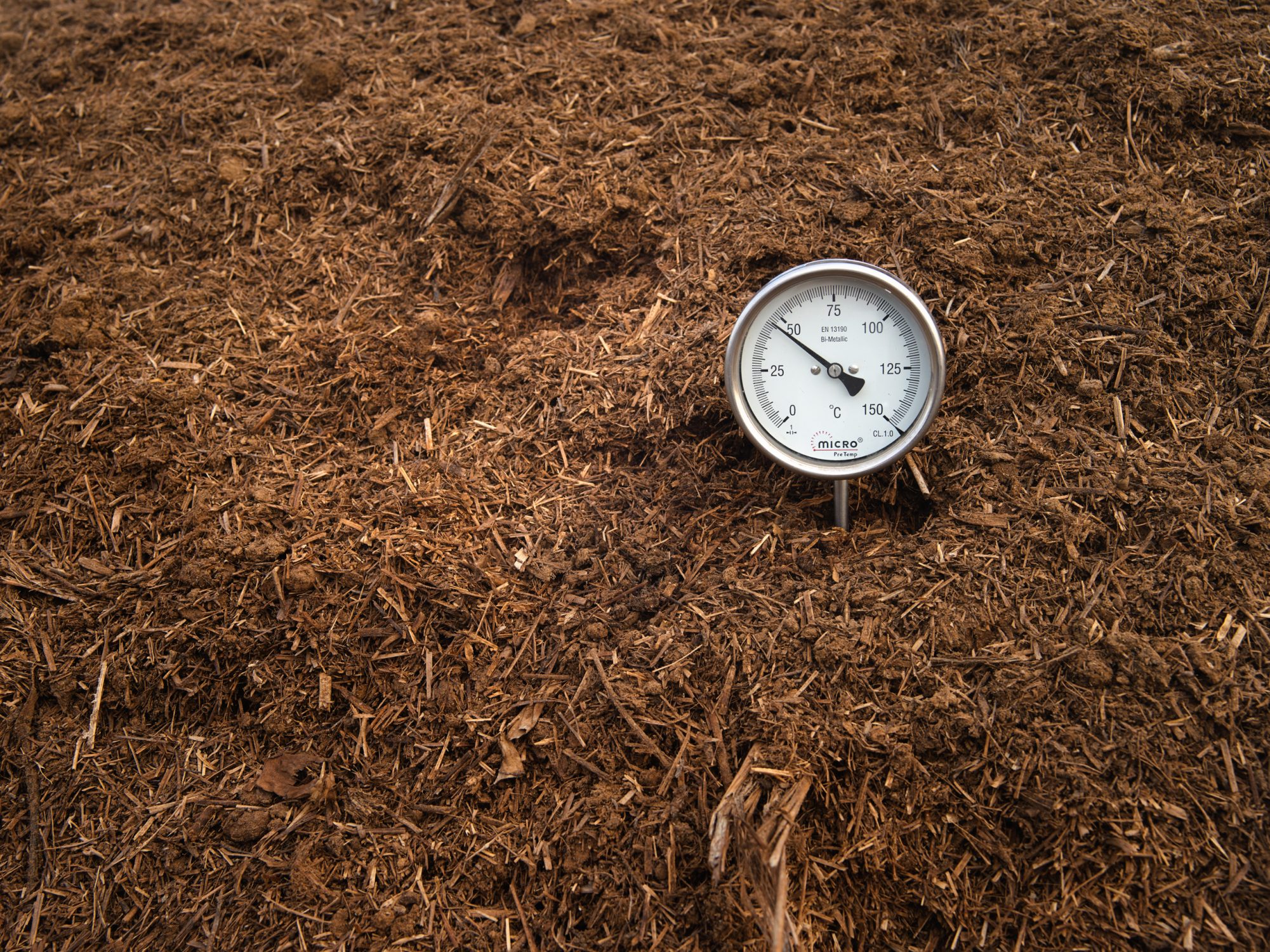
The compost station
Next to a small building, we saw about ten long piles of compost. In each of the one-and-a-half-meter-high piles was a sign stating exactly how old the compost was, how often it had been turned, and when the last preparations had been added. David Hogg talked about measuring the temperature daily, the tested layered structure of green and dry biomass, cow dung, and coffee husks, which delivered the best results.
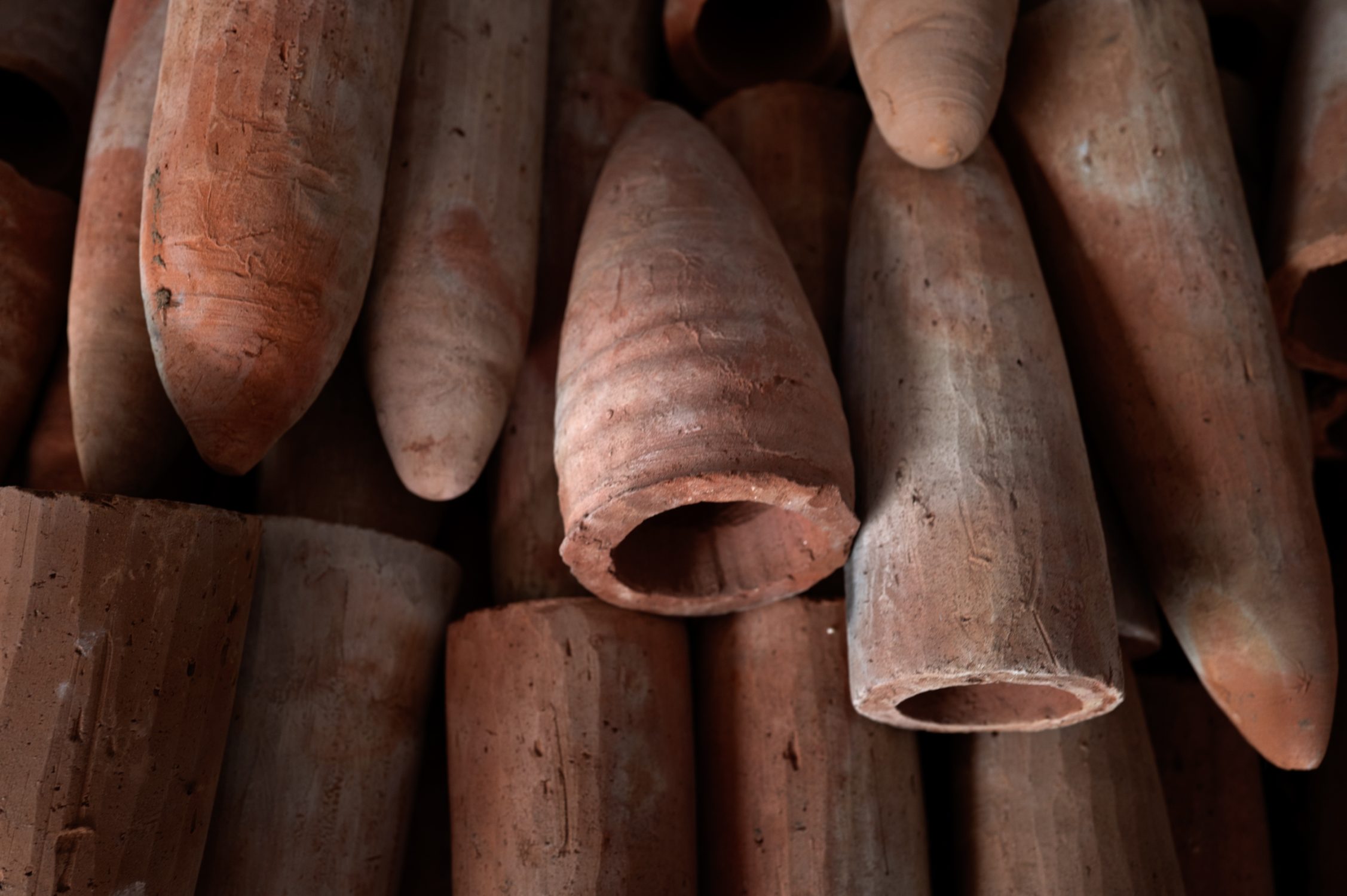
"This compost centre is almost like a temple where we provide, we develop these microbial cultures."
A sign explained which substances were used to make the preparations to enrich the compost. These are flowers and herbs (nettle, dandelion, yarrow, chamomile) bark of oak trees, which, together with cow dung, quartz powder, and lime, are buried in the soil of the fields, in clay tubes, or in coconuts, banana leaves or gourds, to start the bio-chemical process that can last for months. This is to enrich the compost with lime, potassium, magnesium, silicon, phosphorus, nitrogen, and trace elements.
"Plant nutrition comes from soil nutrition. And what is soil nutrition? It is about the symbiotic relationship between the plant, the microbiome, and the fungi in the soil."
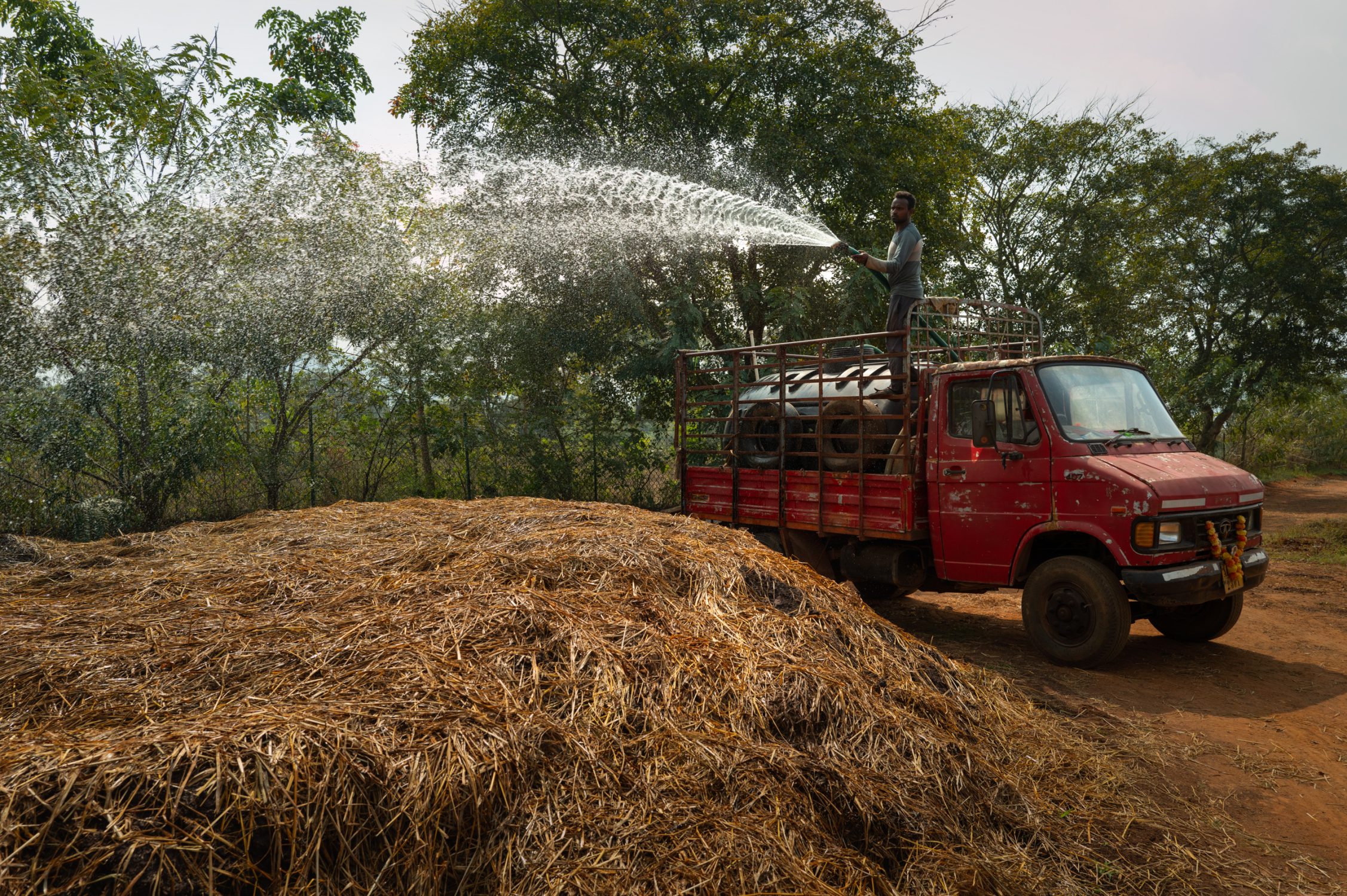
The ‘old faithful’, the original red truck.
Now worn out and replaced by many newer and undoubtedly beautifully shiny red trucks, this had been the vehicle that Manoj used about ten or twelve years ago as a symbol of the demanding but profitable working method that the farmers had to follow to meet the standard as the supplier of top coffee.
The famous 19 steps in order to produce premium coffee. This red truck in a cloud of dust, driving on that single road through the valley had become a regional legend.
On the government plantations, the coffee was harvested on a certain date and all the berries, in various stages of ripeness (red, pink, green), were stripped from the bushes at once and processed.
The advantage of this is that you only have to harvest twice a year. The disadvantage is that the quality of the coffee is much lower due to the unripe berries. Picking just the bright red, ripe berries by hand requires weeks of walking between the bushes, repeated dozens of times. The coffee bushes are on high plots, often on steep slopes, miles from the road. That is hard work and a task that requires concentration.
In the project’s early days, Manoj used the red truck to capture the pursuit of quality and prosperity in a single striking image.
‘The farmers asked, ‘ Will you pay the same if the quality varies? ‘ The answer was No.
I will pay you 50% more than the market price, but I will pay you three times as much if all the berries are ripe and red. If a farmer says he will only give me red berries, I will send a red truck to pick them up. If there are other colours, such as green, pink, etc., I will not send the truck again. In a few years, more than 80% of the farmers had put in the effort.
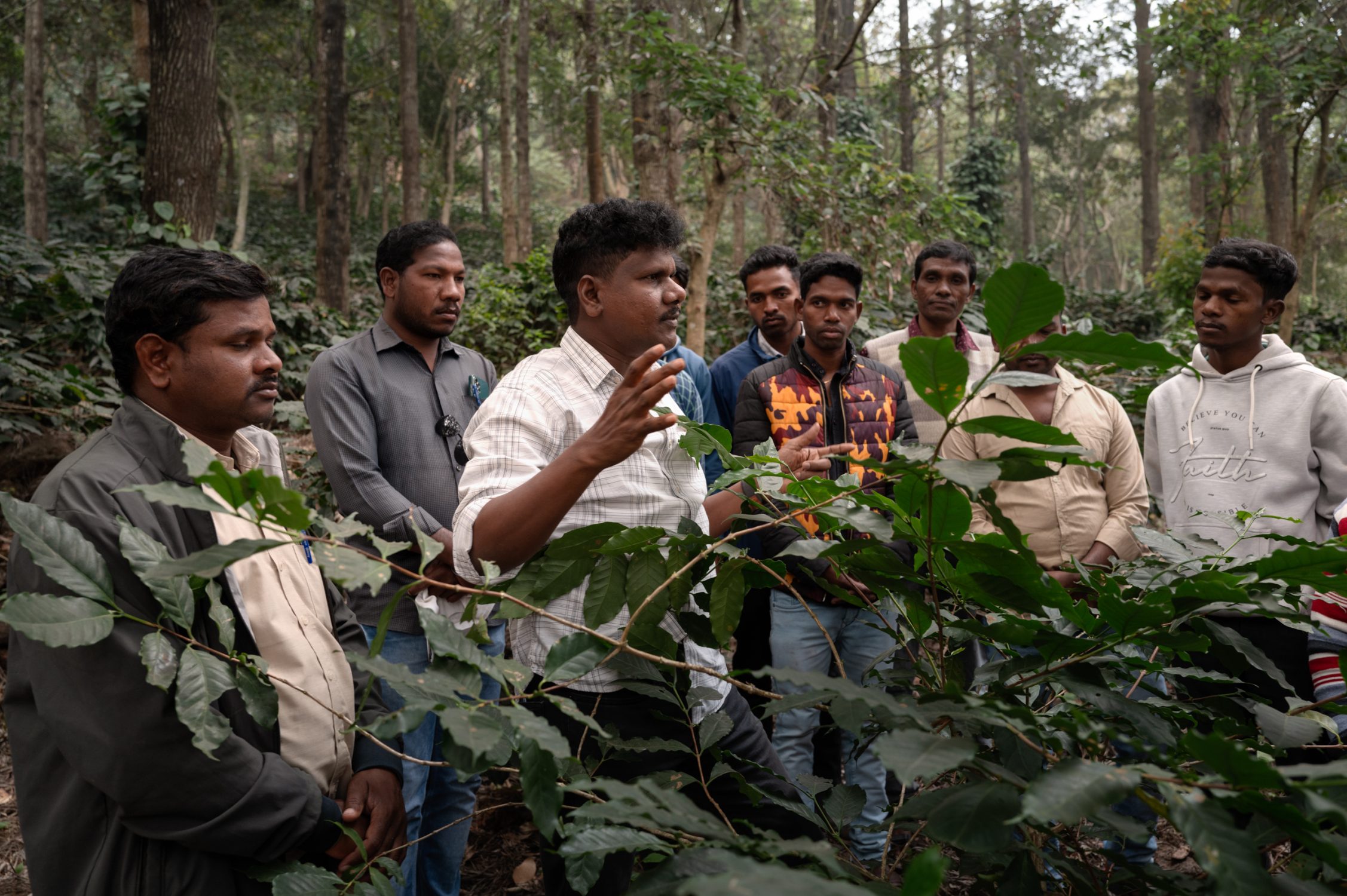
48,000 training meetings are held annually. There are master trainers who teach the village trainers. In groups, in the field, the actions and operations relevant to each month of the season are explained and discussed. The village trainers then ensure that the farmers receive information in the same way. In the fields, by demonstration, using documentation that consists of 75% images and 25% text.
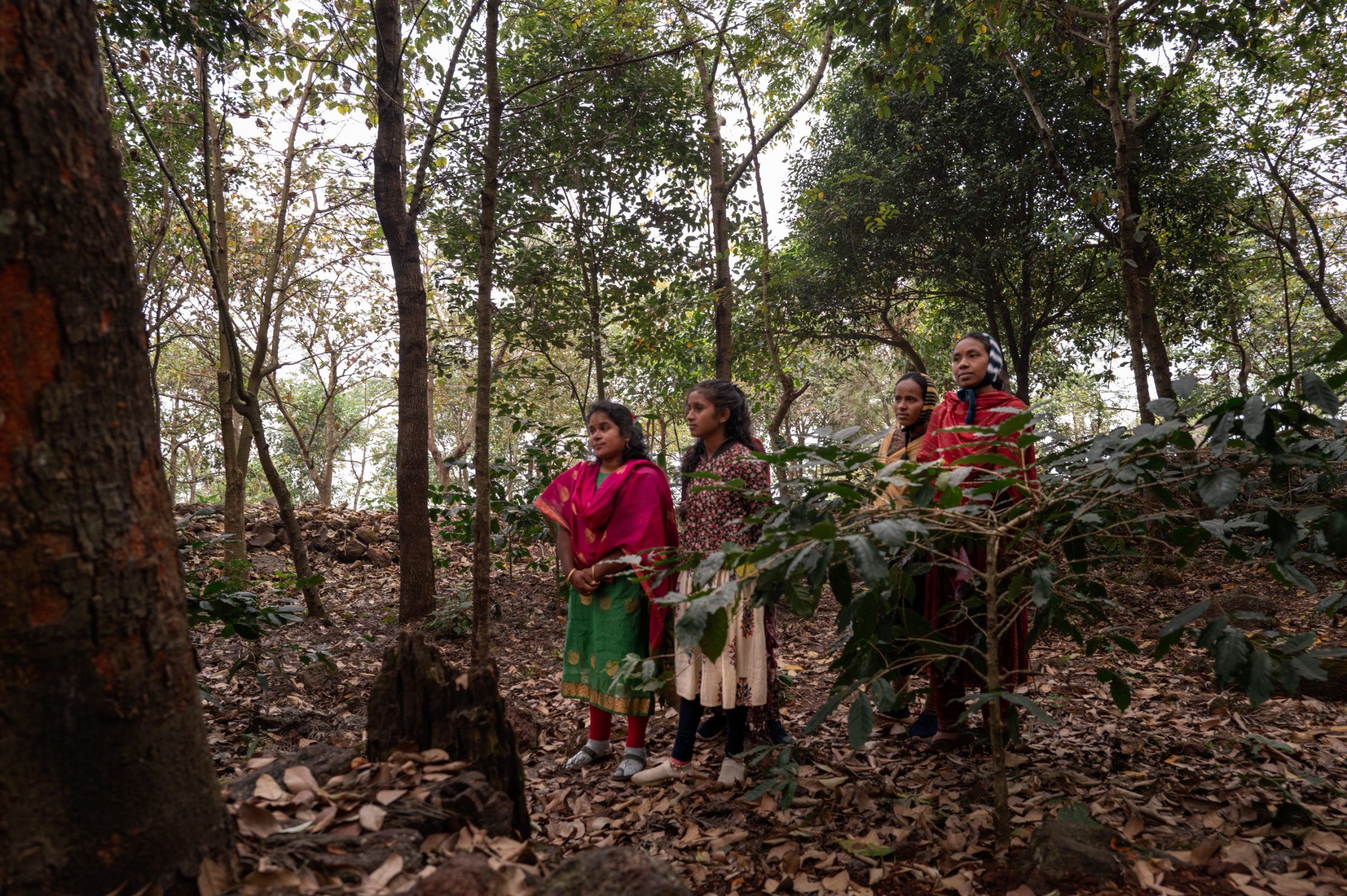
By choosing the right people and using tablets and smartphones and creating monthly reports, a lot of feedback from the farmers can also be returned to the Naandi team. The trainers are paid for teaching, because it involves many hours per week. The 2,800 active trainers are all farmers themselves.
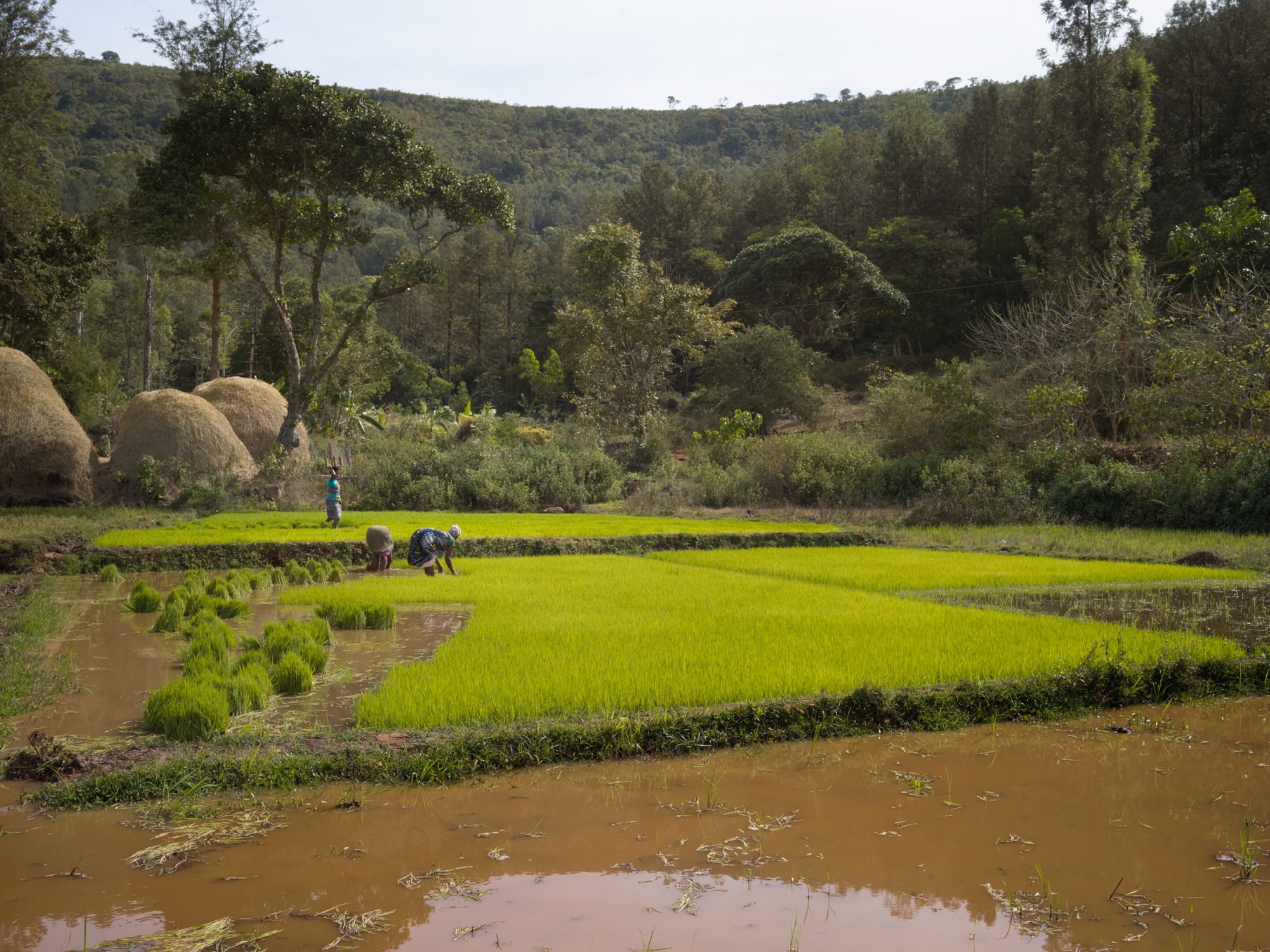
Visiting the valley, the farmers and their families
From the morning, the tasks are clear, the work schedule sends the men and women into the rice fields, up the slopes, on time. The forest, the field are buzzing with human ingenuity. Until the light takes on a bronze hue, until some flowers start to droop, certain birds fall silent, and others stir.
Then the twittering of the work schedule also stops, and the forest turns out to be higher, wider, deeper, mightier than during work. They are large, mysterious hills behind which lie the villages. The way back to the village makes us realize how old and big the world is, how precious the houses, the courtyard, the barns with sheep, the streets with children and chickens scratching around, the clean water, the fires with pots of food on them, the voices, the bodies, the looks of the family, the memory of the old people.
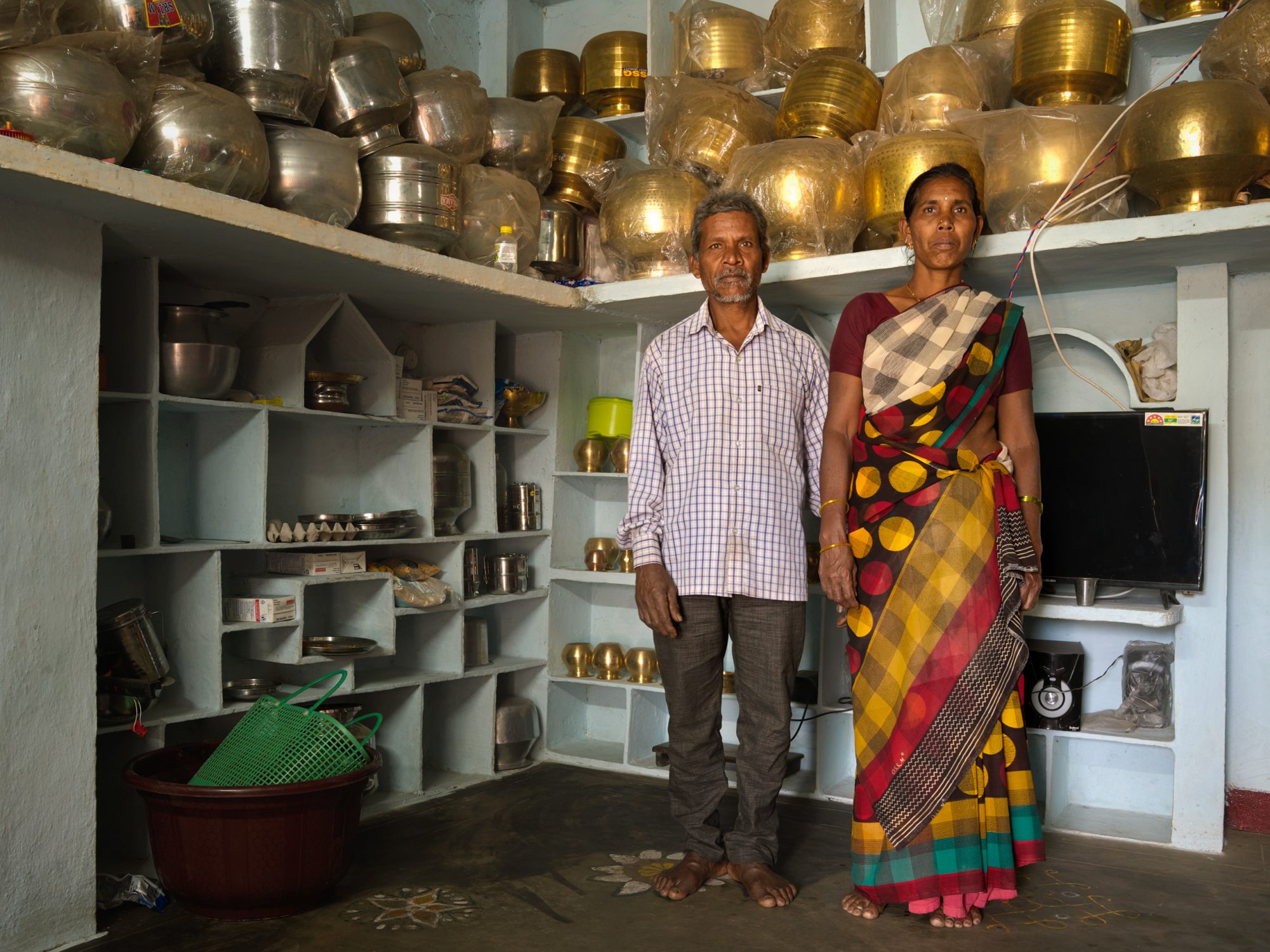
In the houses built from the colors and shadows of the earth, the gleaming metal is a reminder of the glow of the wedding party. The carrying arms, the admiring glances of the family and the village. The light that gathers daily in those radiant pans and bowls is also an incentive to maintain discipline, to endure the effort and not to forget that every day worked is a coin in the children’s piggy bank.
Boini Kondababu and Boini Rajulamme
Araku Coffee Farmers, Gondirapa

Jetti Ganeswarrao and Jetti Bullamm
Araku Coffee Farmers, Cheruvupakalu
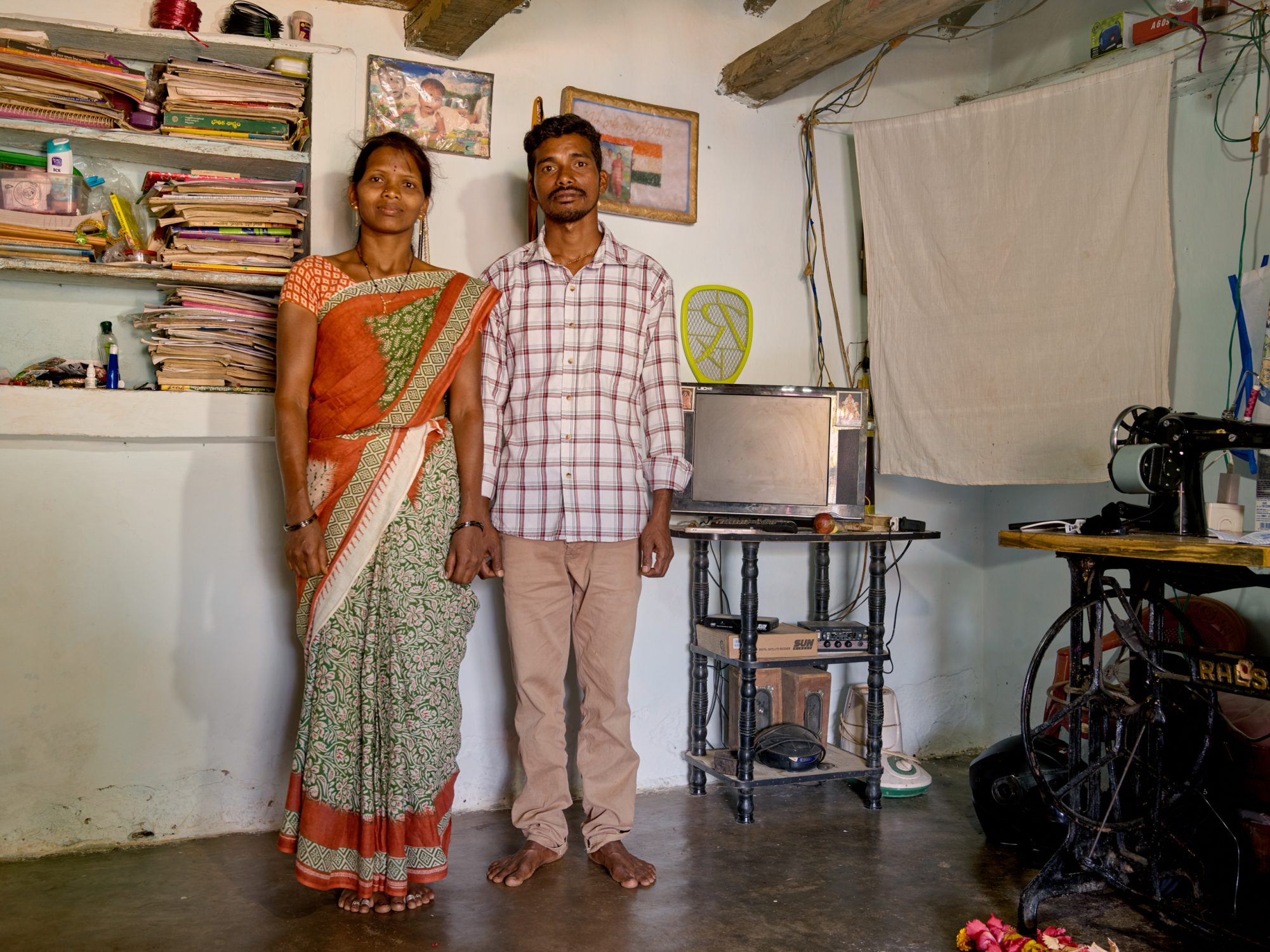
Lake Balachandara Babu & Roopavathi
Araku Coffee Farmers, Ukurbha

Korra Sabbu Rao and Korra Sujatha
Araku Coffee Farmers, Labjari

Pangi Matyaraju and Kumari
Araku Coffee Farmers, Gurragaruvu
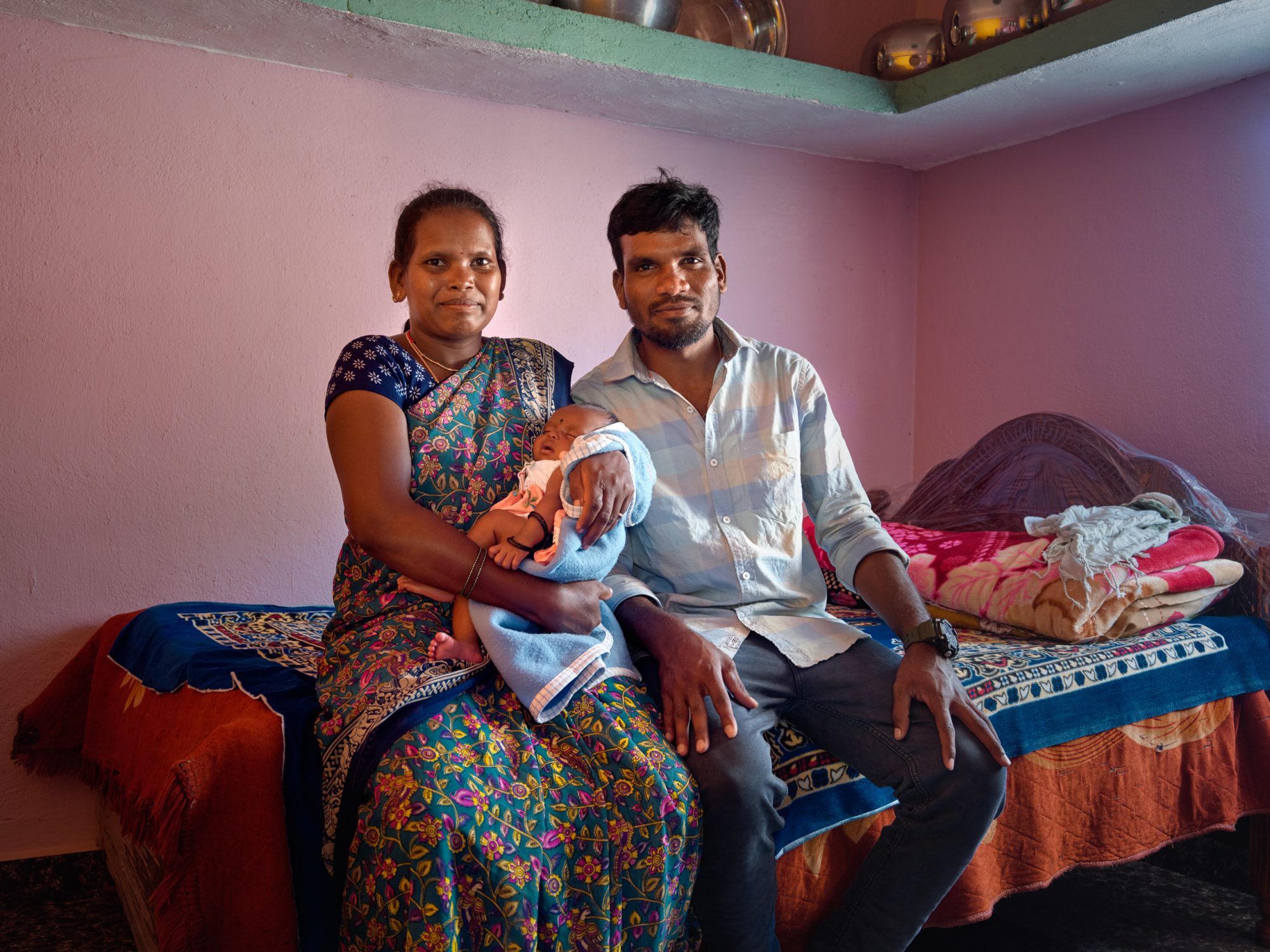
Because they had the courage to learn new things. Because they decided to work every day. Finding that their patience and perseverance paid off, they sit next to their televisions, their gas cylinders, their computers, their stacks of brochures and course books, their well-deserved awards. Next to their supply of millet and rice, in their crisp, marble-tiled pantry, walls full of gleaming pans and bowls. The young people, used to modern media, sometimes cautiously smile, the older generation are more serious.
Pagi Rambabu Family
Araku Coffee Farmers, Gummaguda
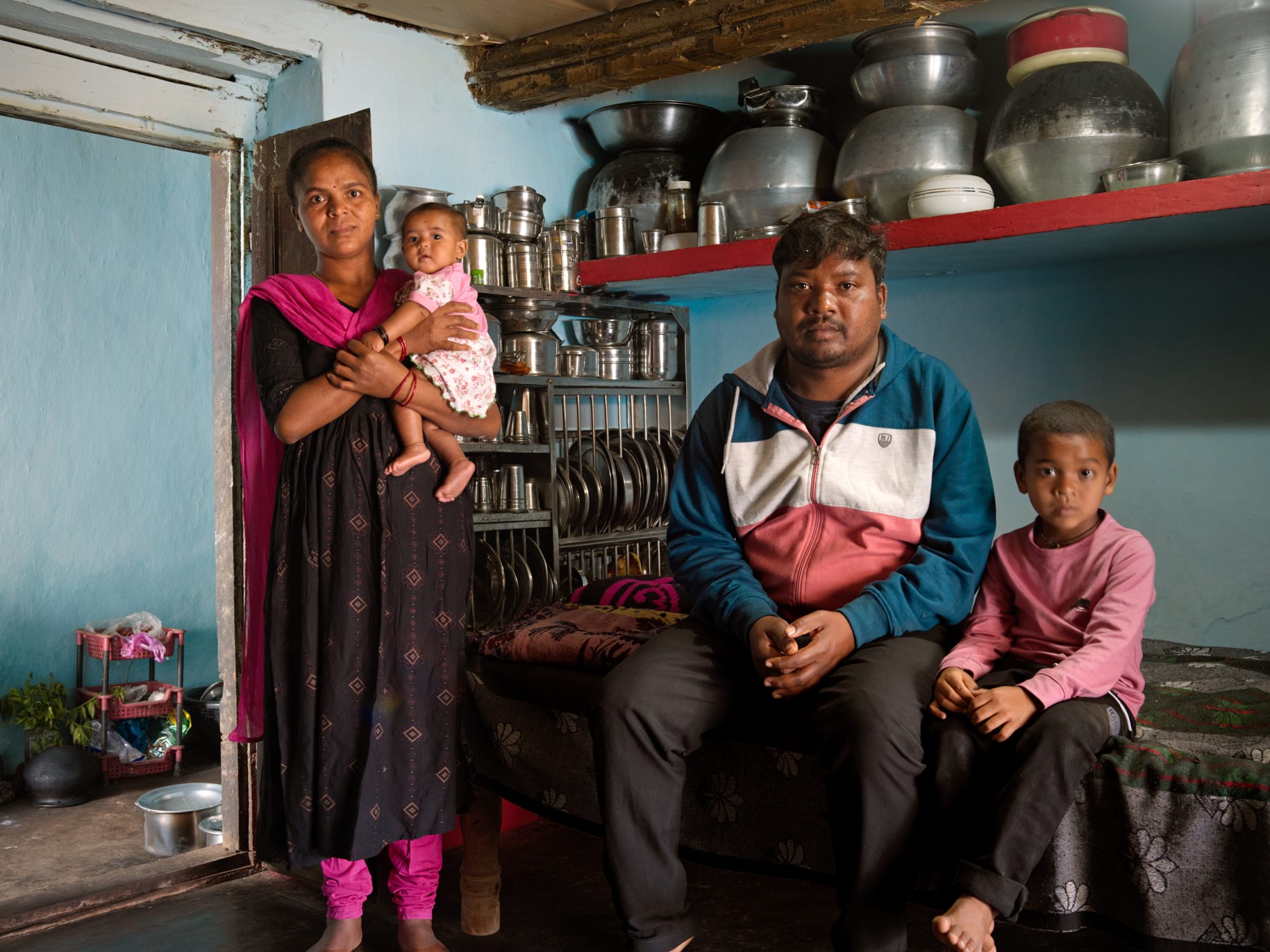
Thamarla Janardhan and Thamarla San
Araku Coffee Farmers, Ukurbha
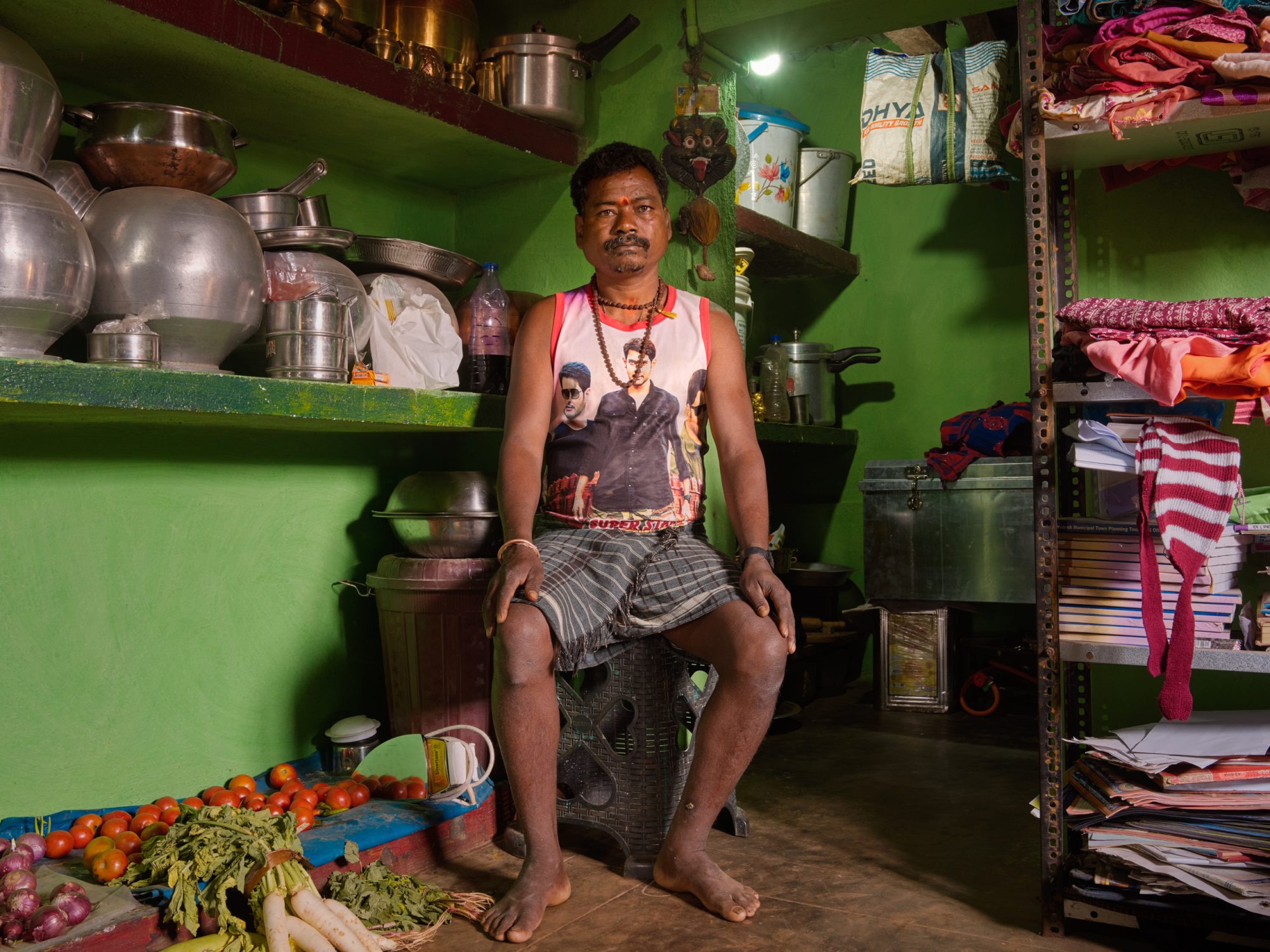
Korra Pottanna
Araku Coffee Farmers, Cheruvupakalu
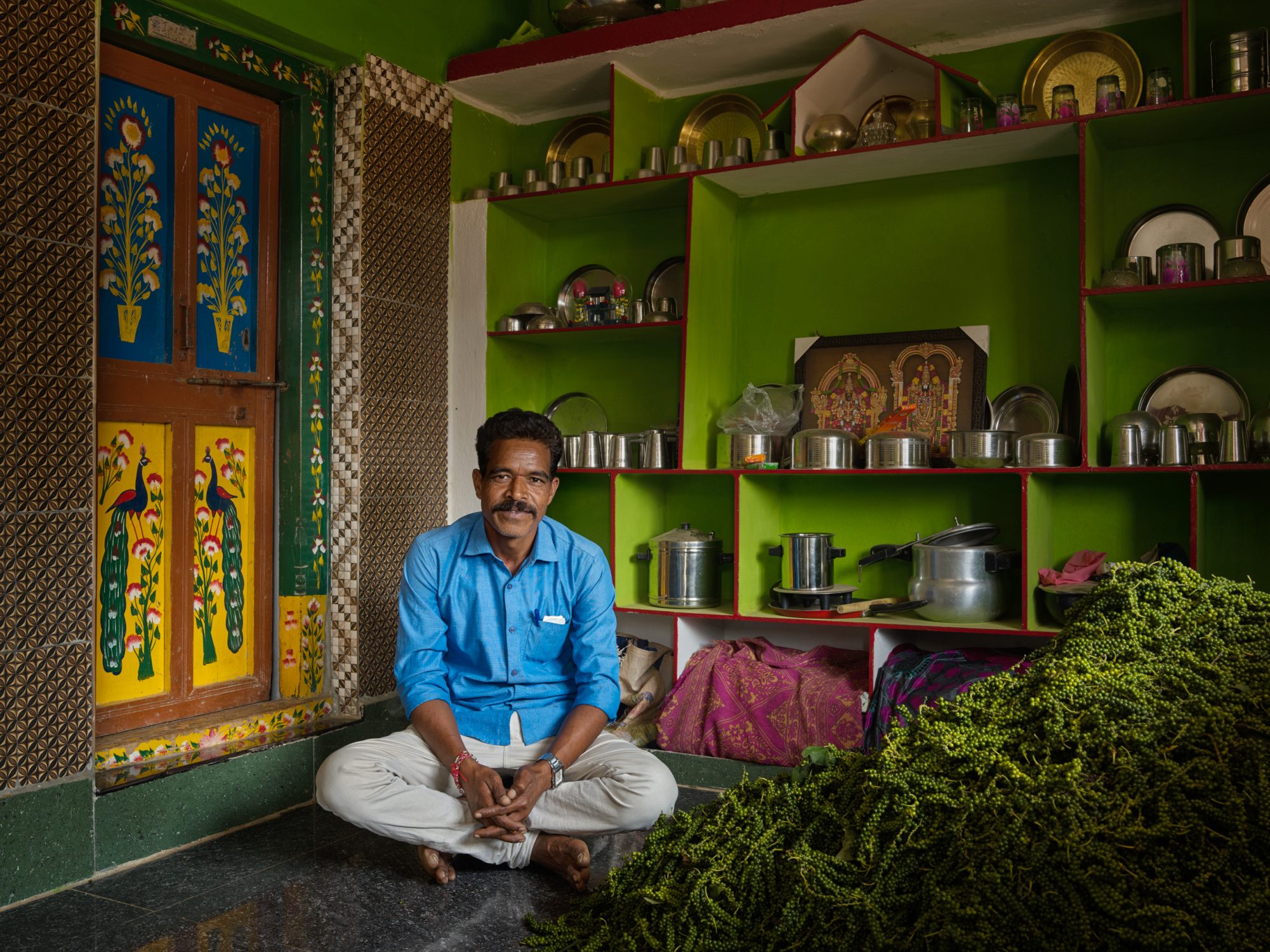
Korra Jayaram
Araku Coffee Farmers, Musiri
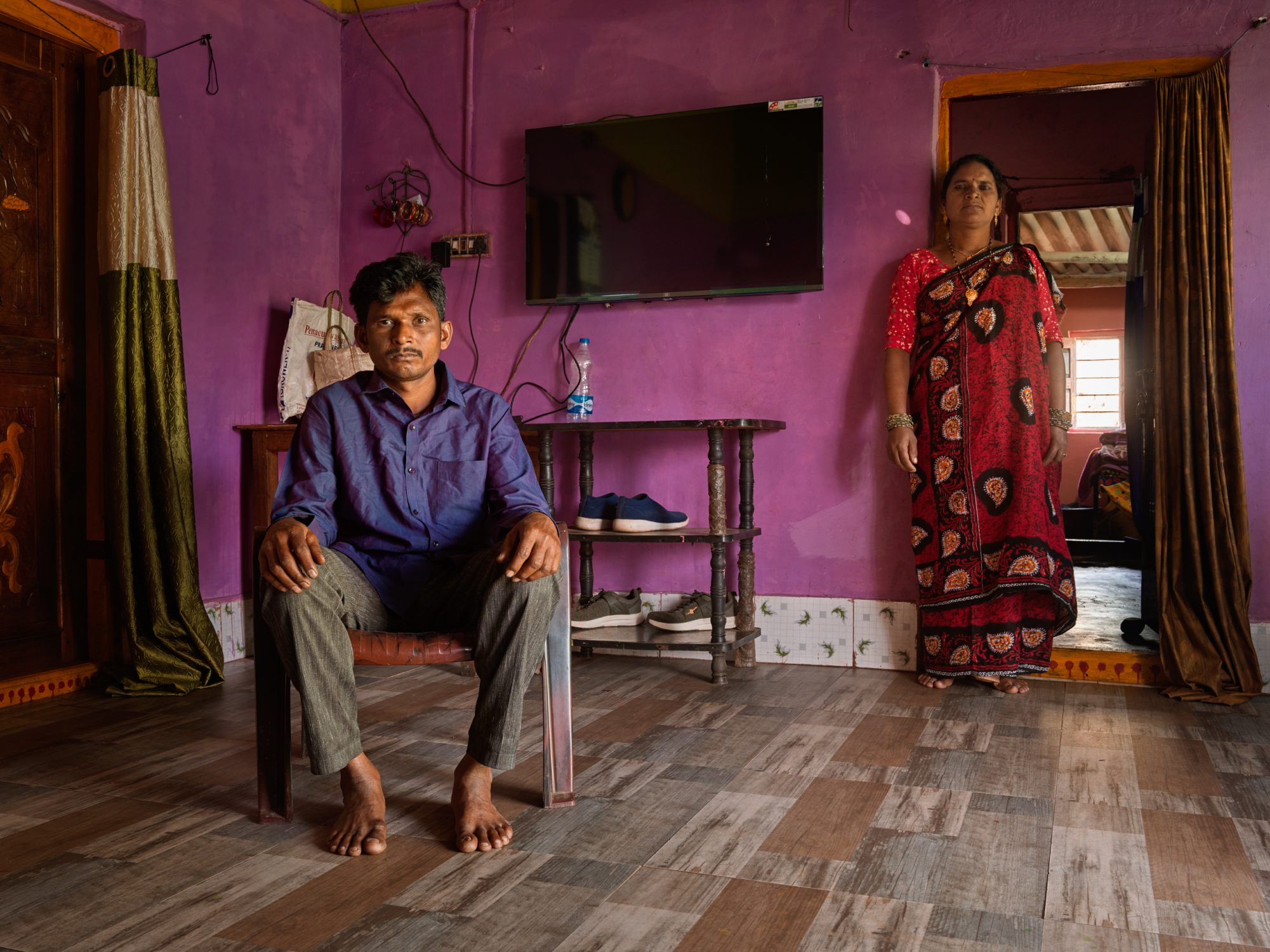
Bebortha Abhimanyu
Araku Coffee Farmers, Mulyagalung
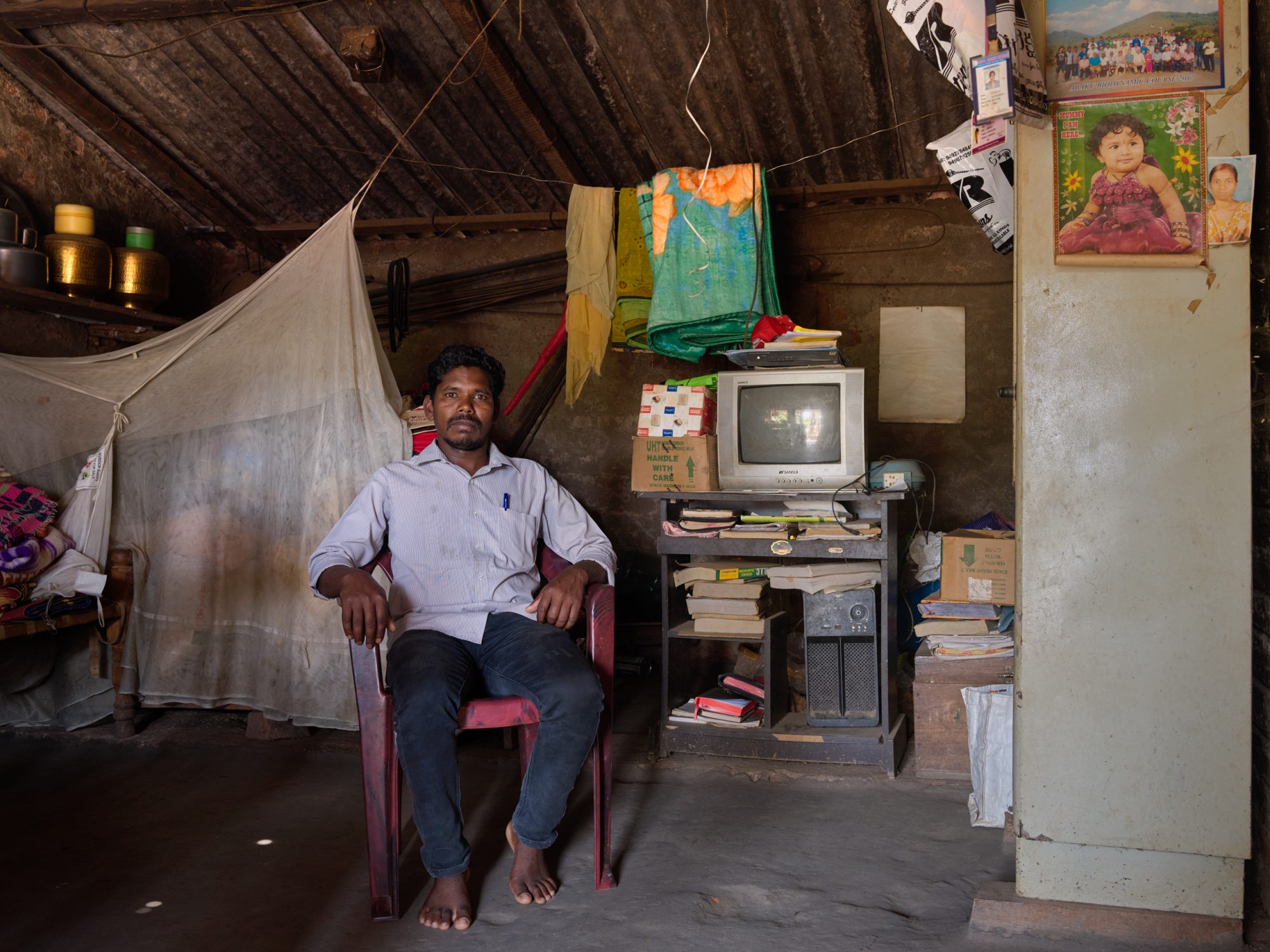
Korra Krishna
Araku Coffee Farmer, Korrai Jamguda
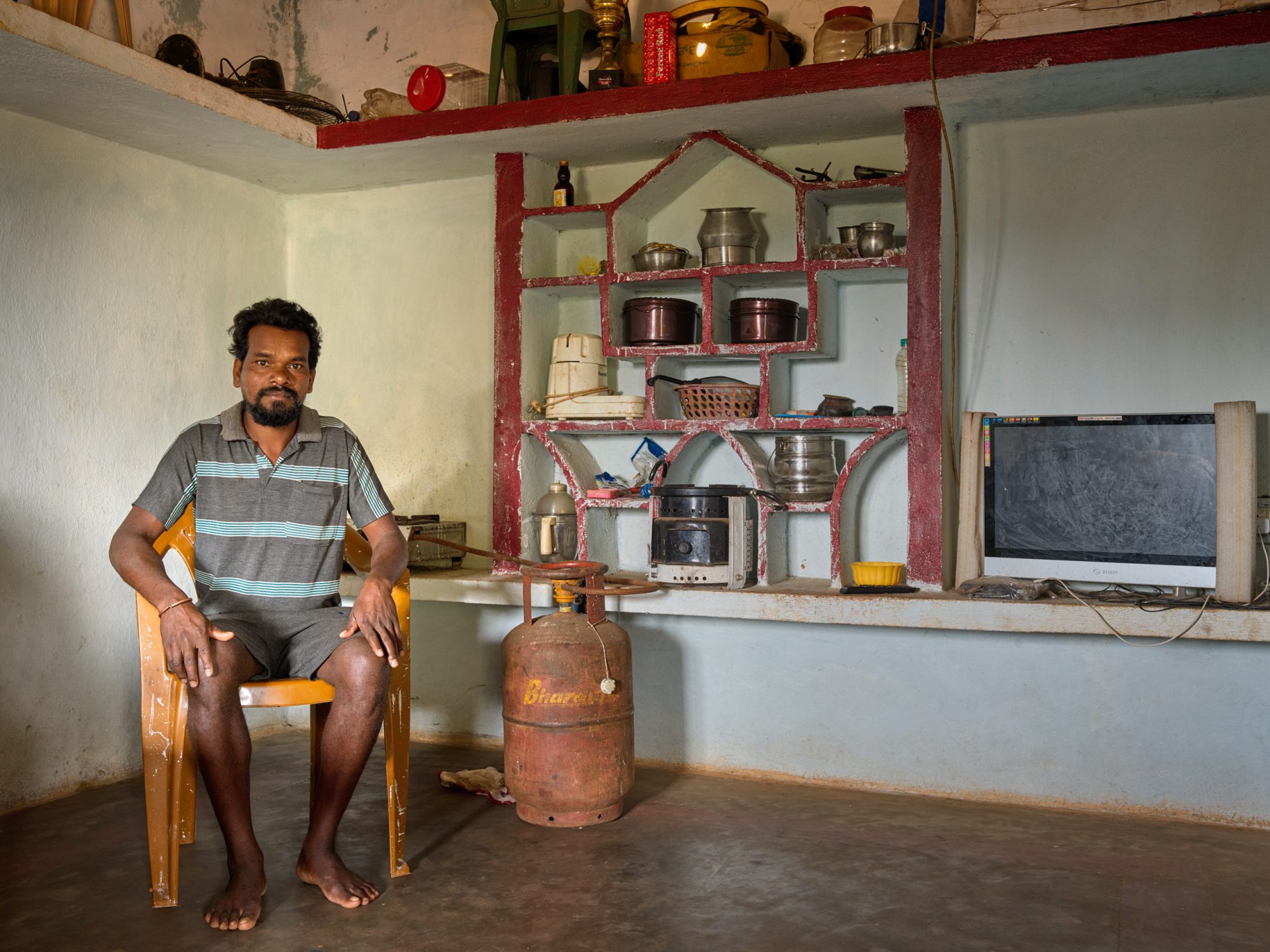
Satyam Babu
Araku Coffee Farmers, Cheruvupakalu
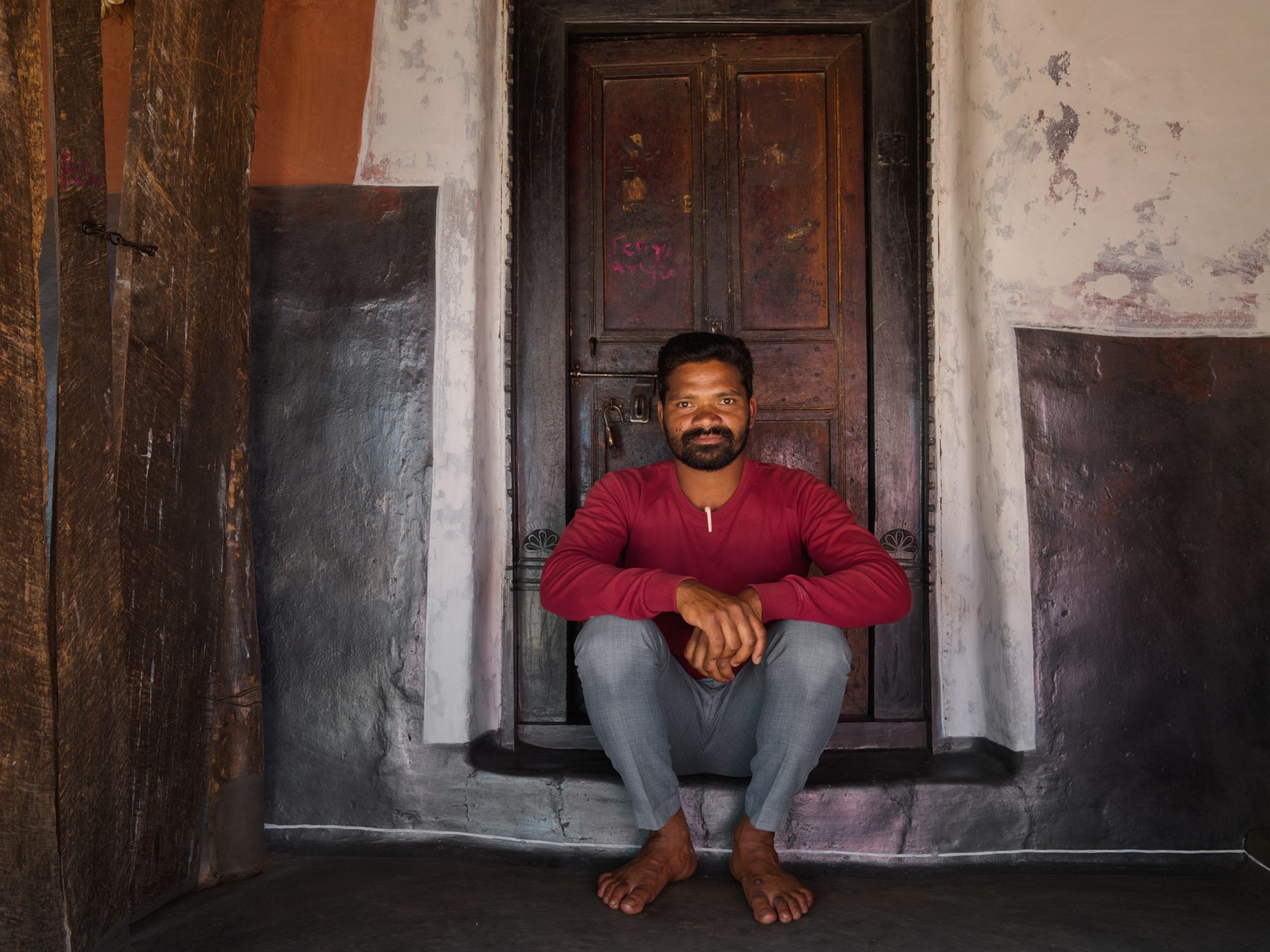
Kindangi Raju
Araku Coffee Farmers, Kumbiguda
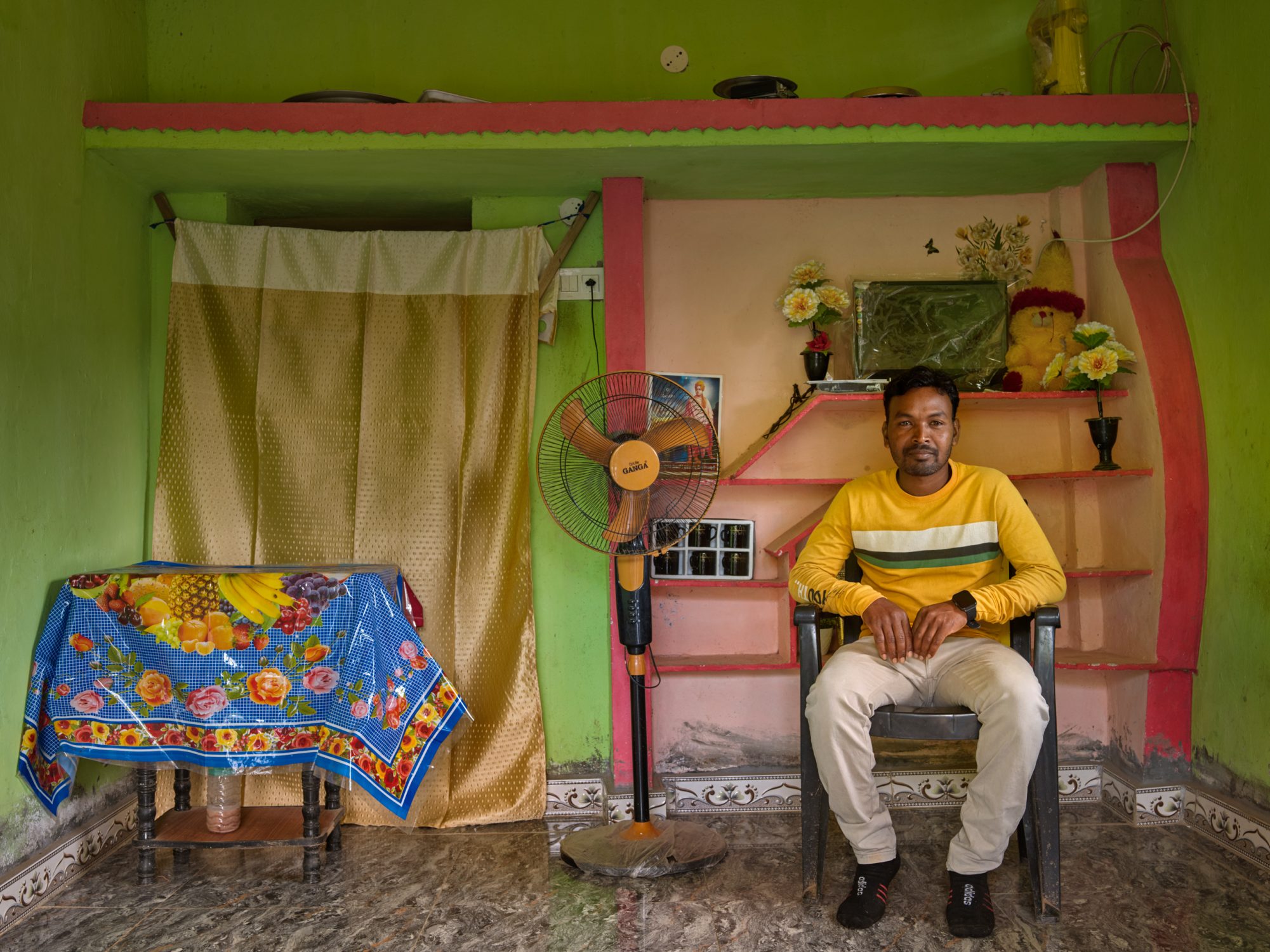
Vanthala Appalanaidu
Araku Coffee Farmers, Kotagumam

Buridi Kamaraju
Araku Coffee Farmers, Baunsguda
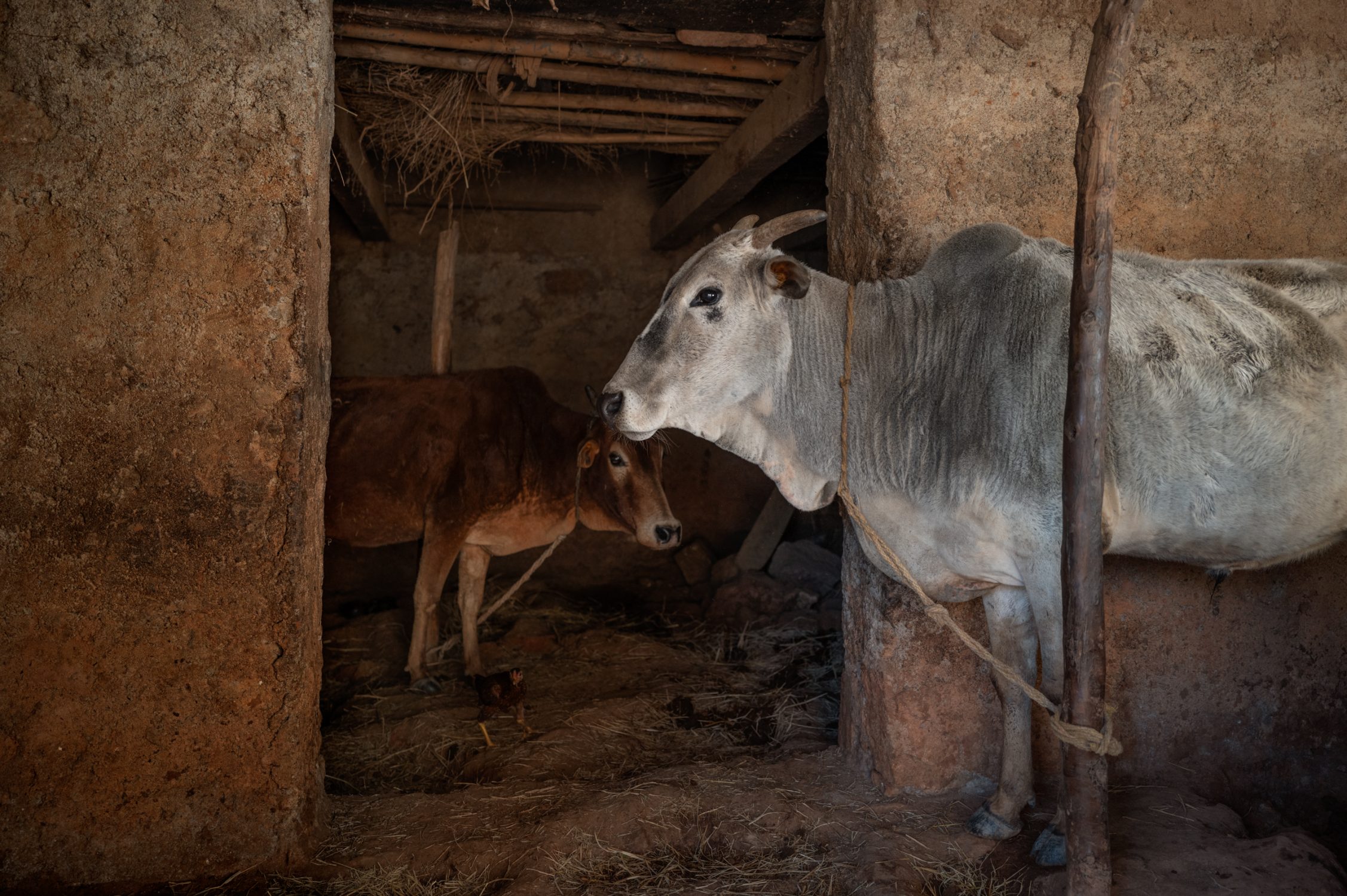
Godhuli time
It is the cow-dust hour
And smoke lies heavy over my head
As I walk across these earthen paths
And smells of burnt milk from inside
Mingle with those from the fields outside.
Poem by Srinivas Rayaprol

Just this morning, the light was fast, sharp and weighed nothing. Now it drags itself along the walls, saturated and languid. The flanks of the cows deepen in colour. In the motionless treetops, the shadows become the first splinters of the night to come.
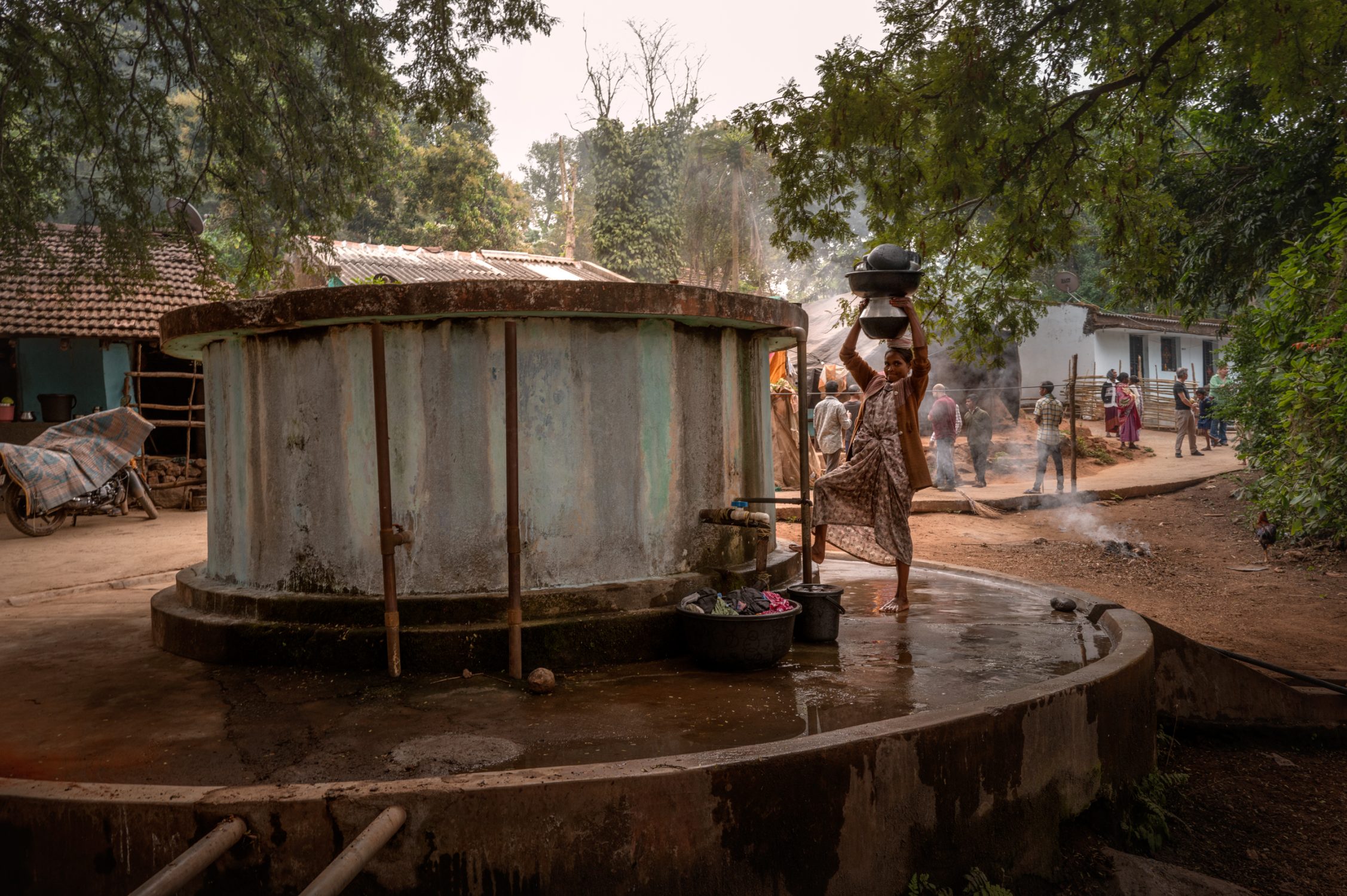
Ukurbha, Araku Valley
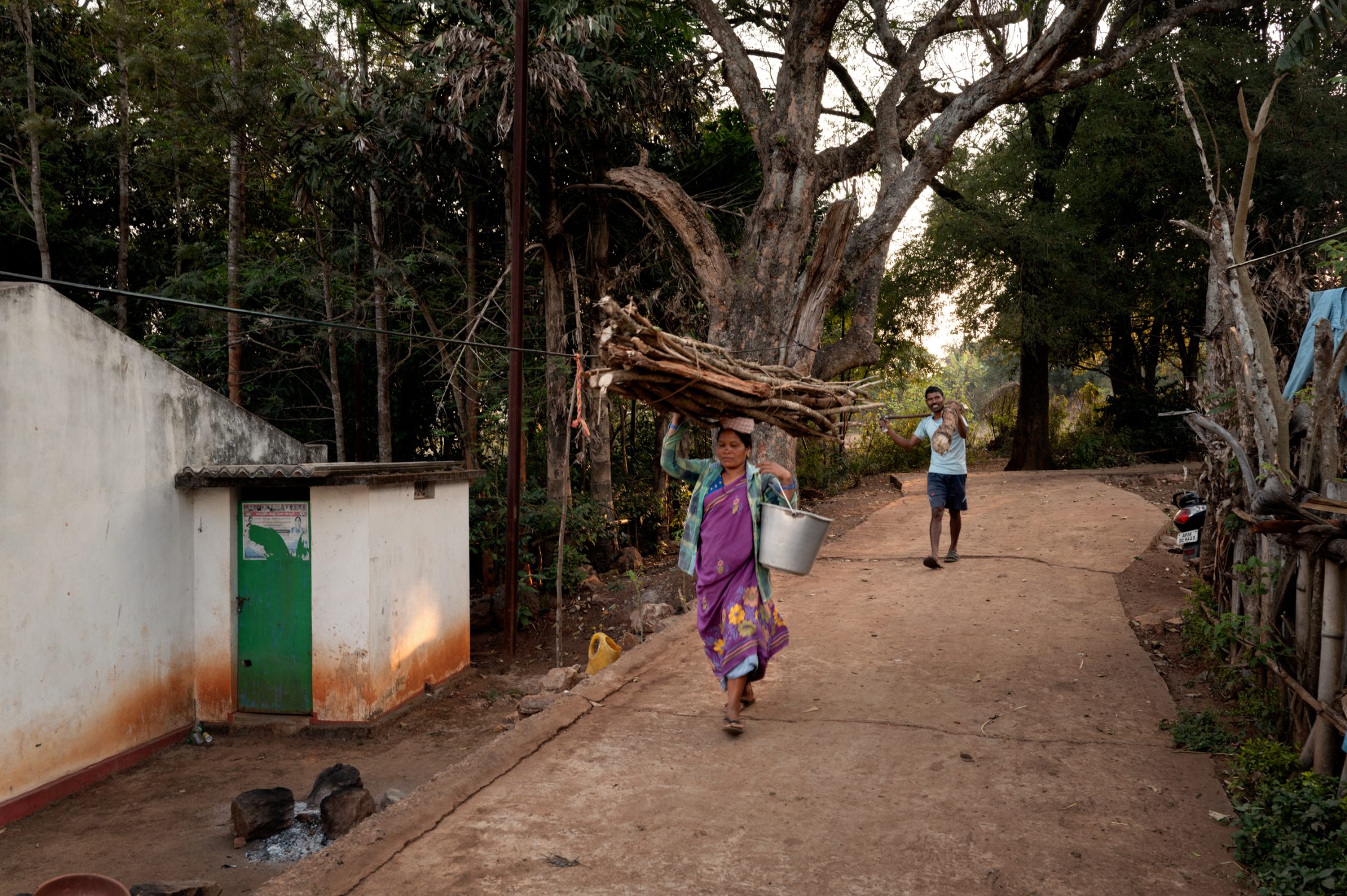
Araku Valley, Ganjaiguda
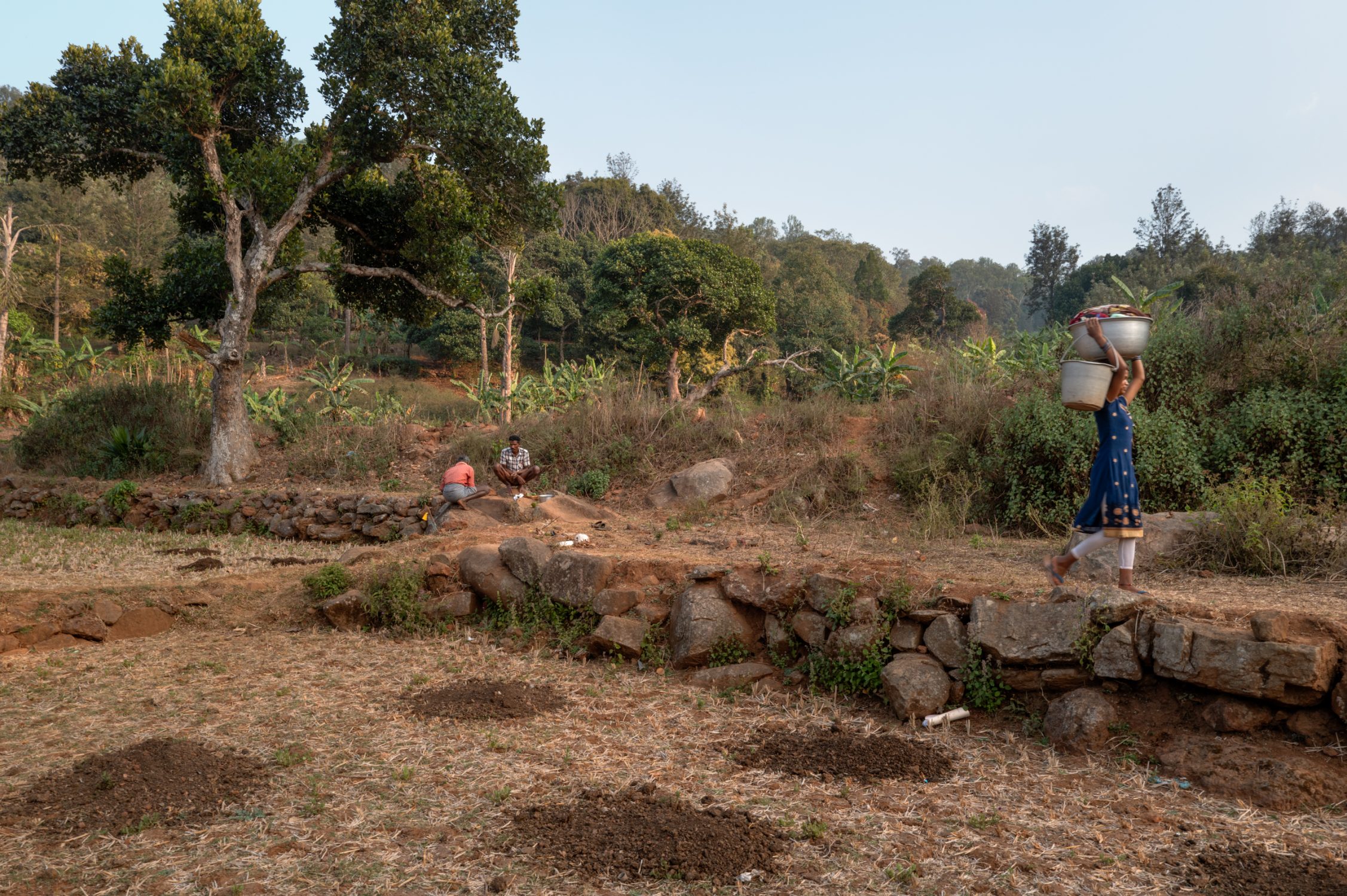
Araku Valley, Mulyagalung
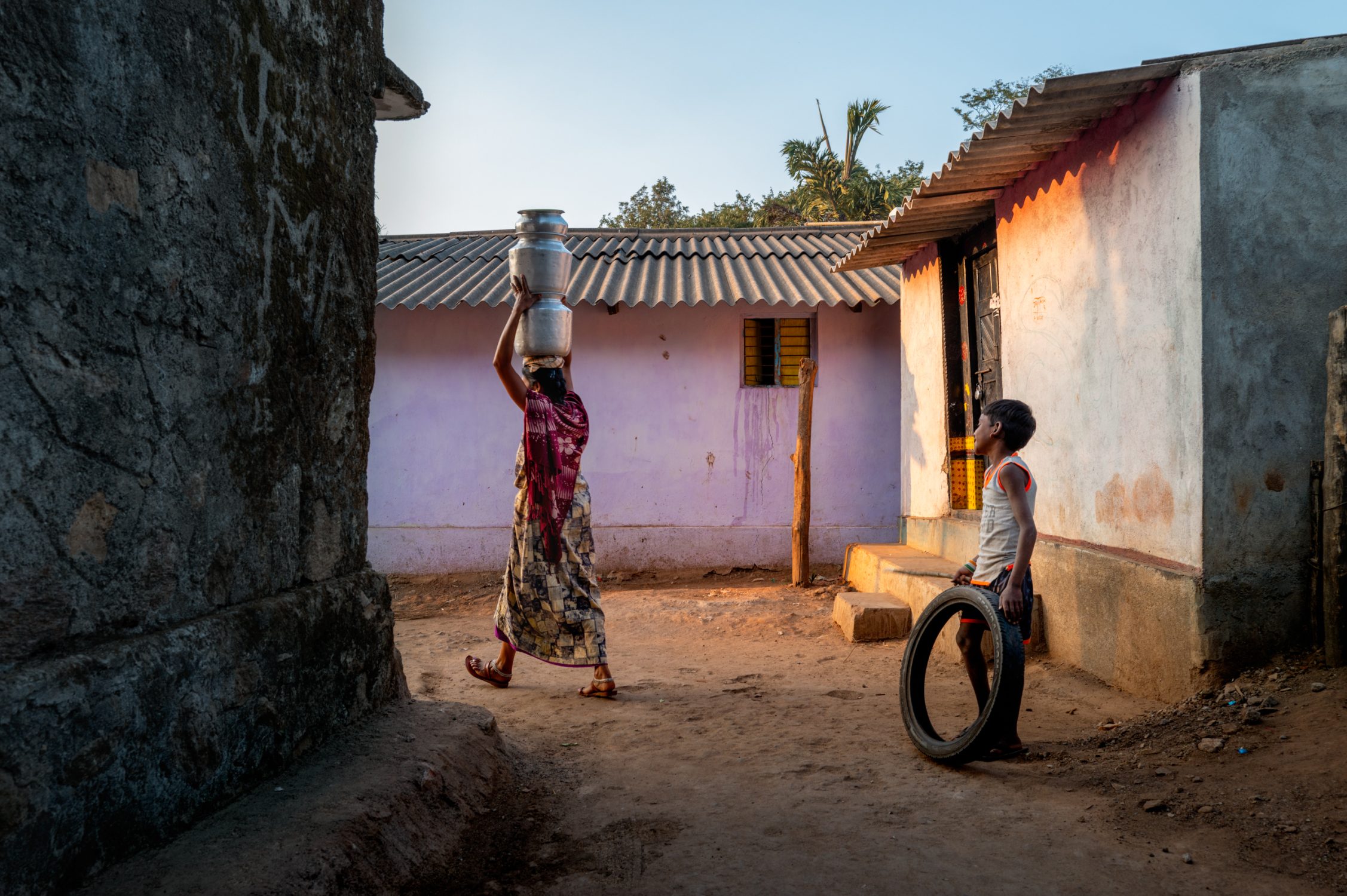
Araku Valley, Mulyagalung
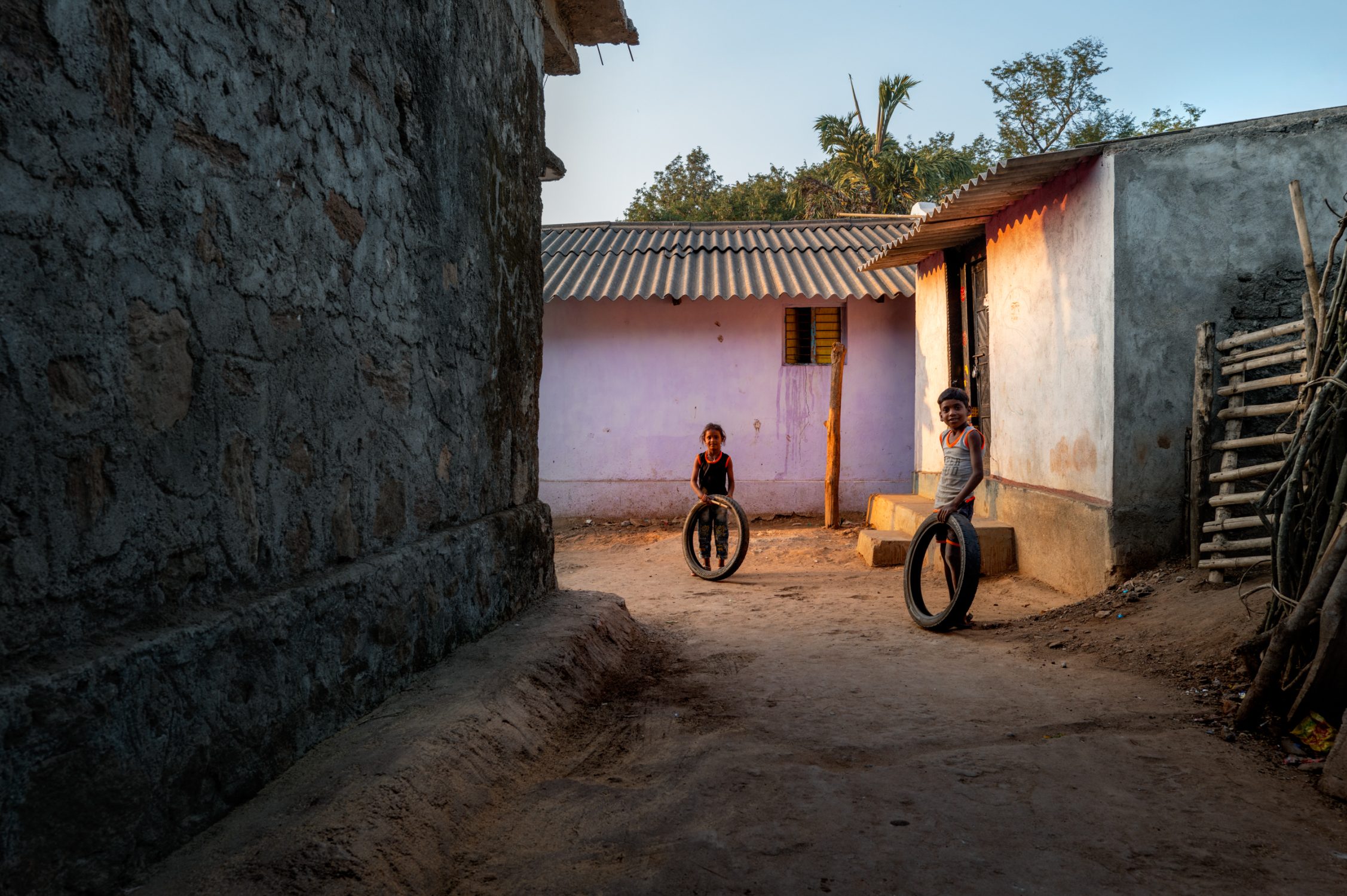
Araku Valley, Mulyagalung
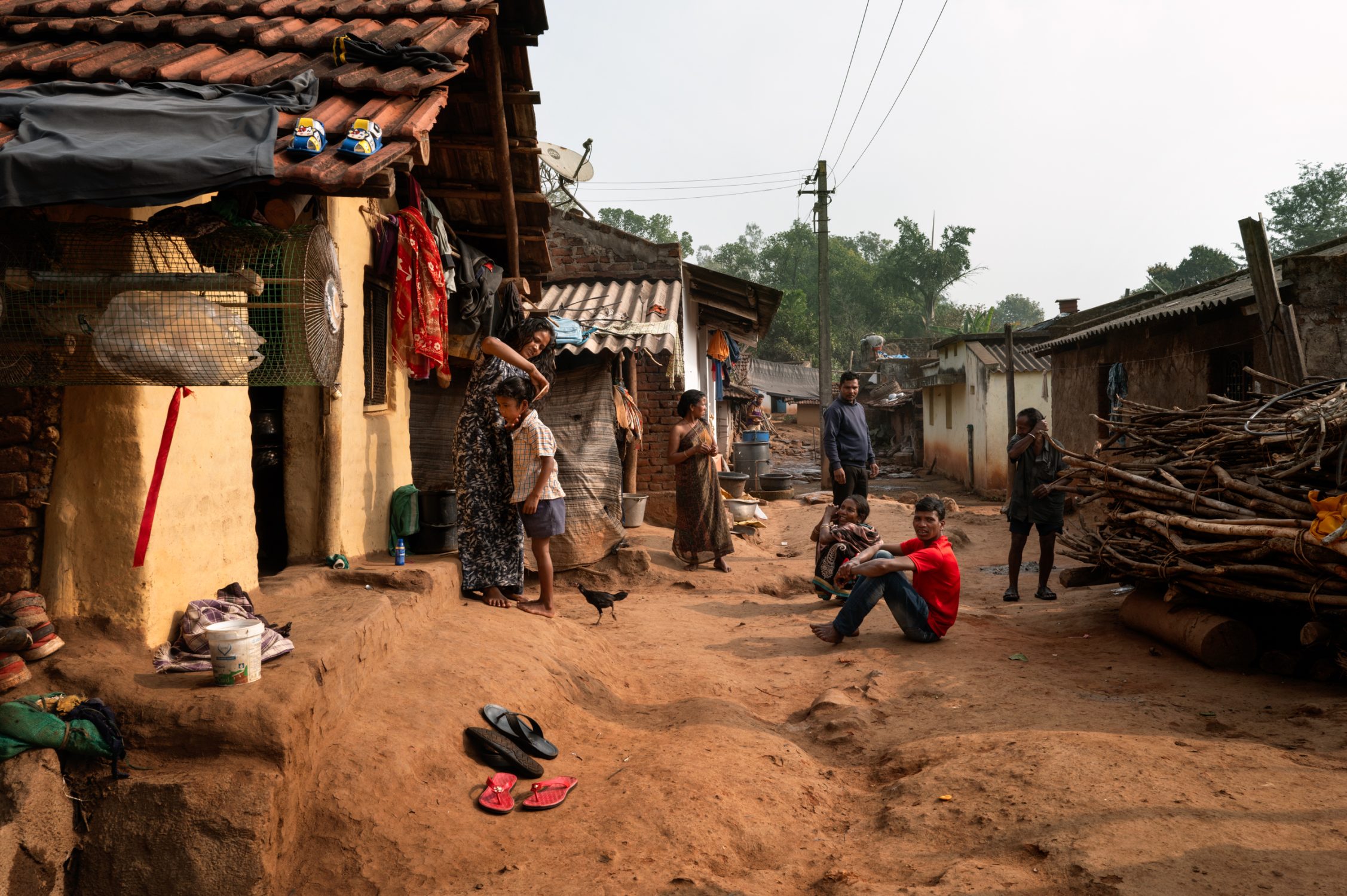
Araku Valley, Ganjaiguda
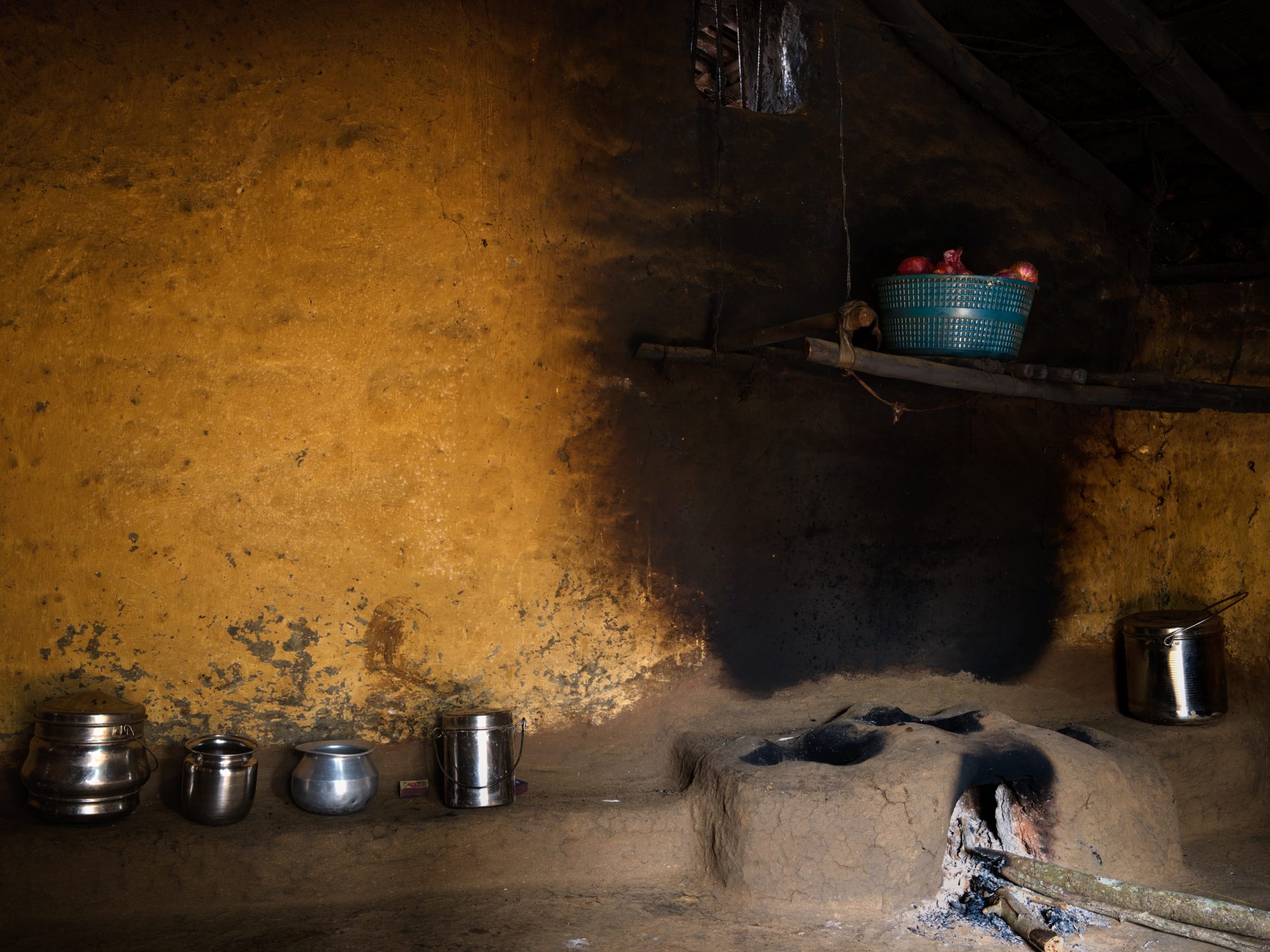
When water washes away the dust and sweat, and its tingling flashes across the skin, the breath stops. Every day the beneficial, deep sigh follows. This is how the body folds the time of work and the time of eating and resting. On the breathing rhythm of the day. Then the little children crawl on your lap.
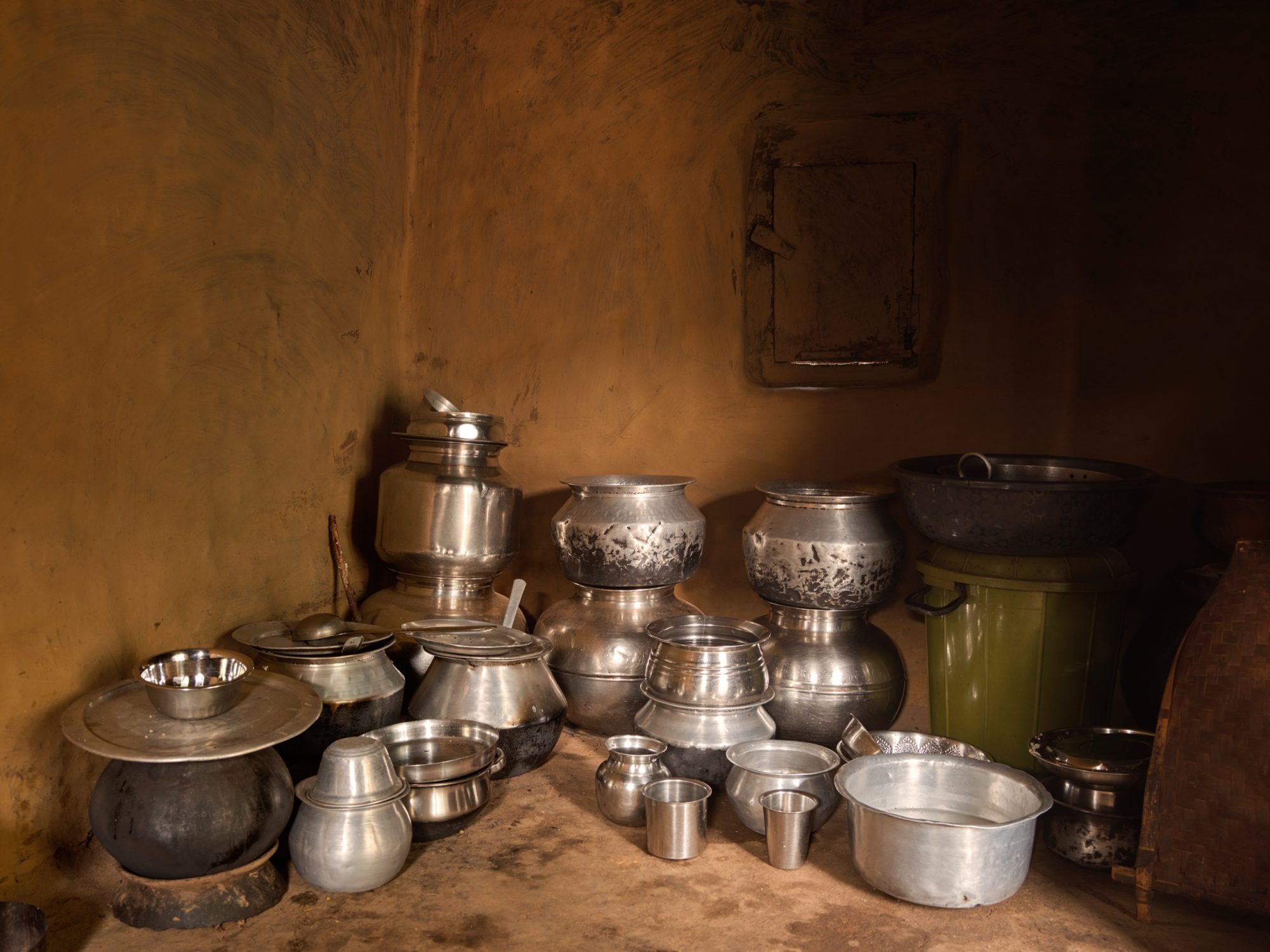
Araku Valley, Ganjaiguda
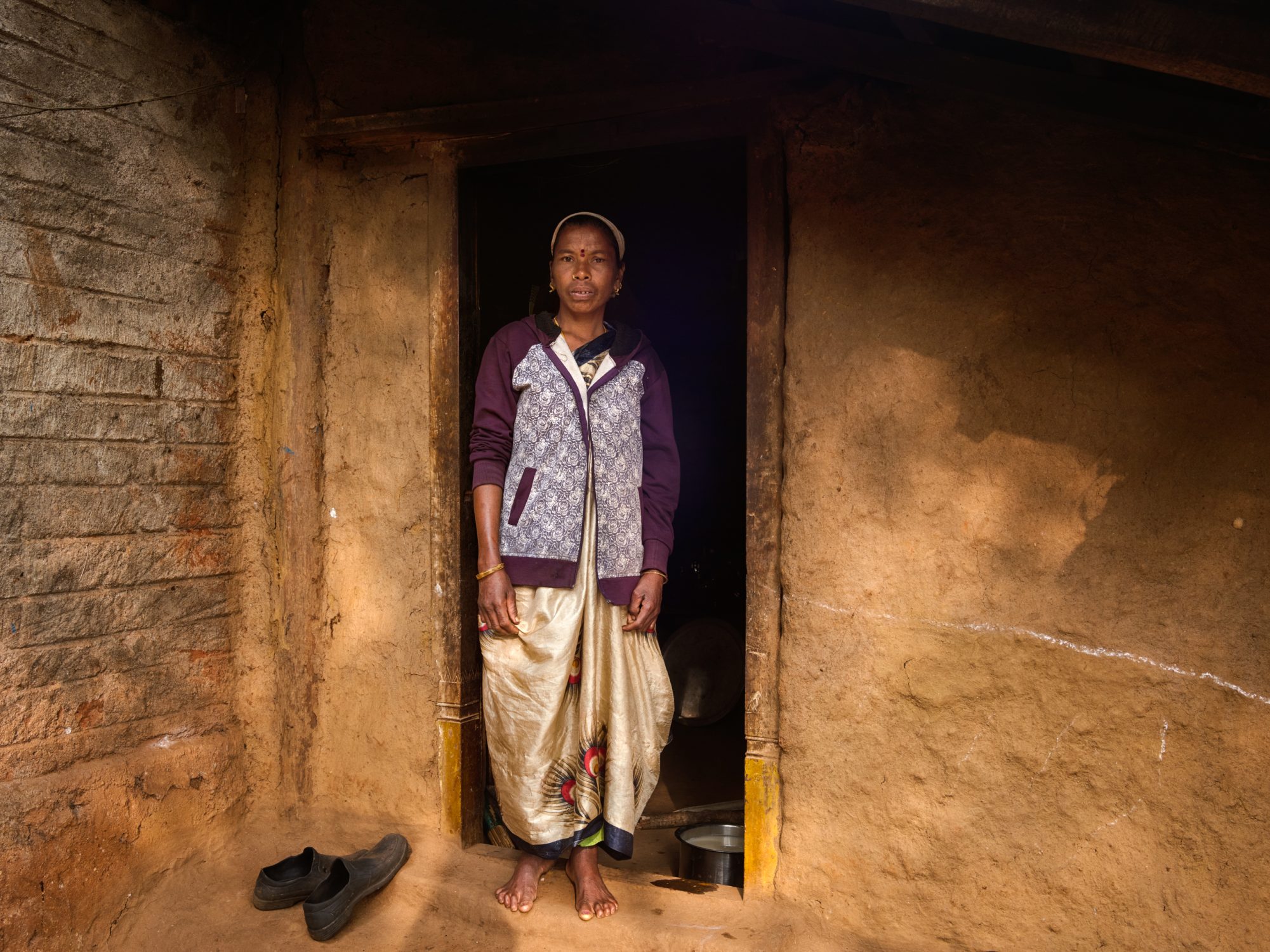
Araku Valley, Ganjaiguda
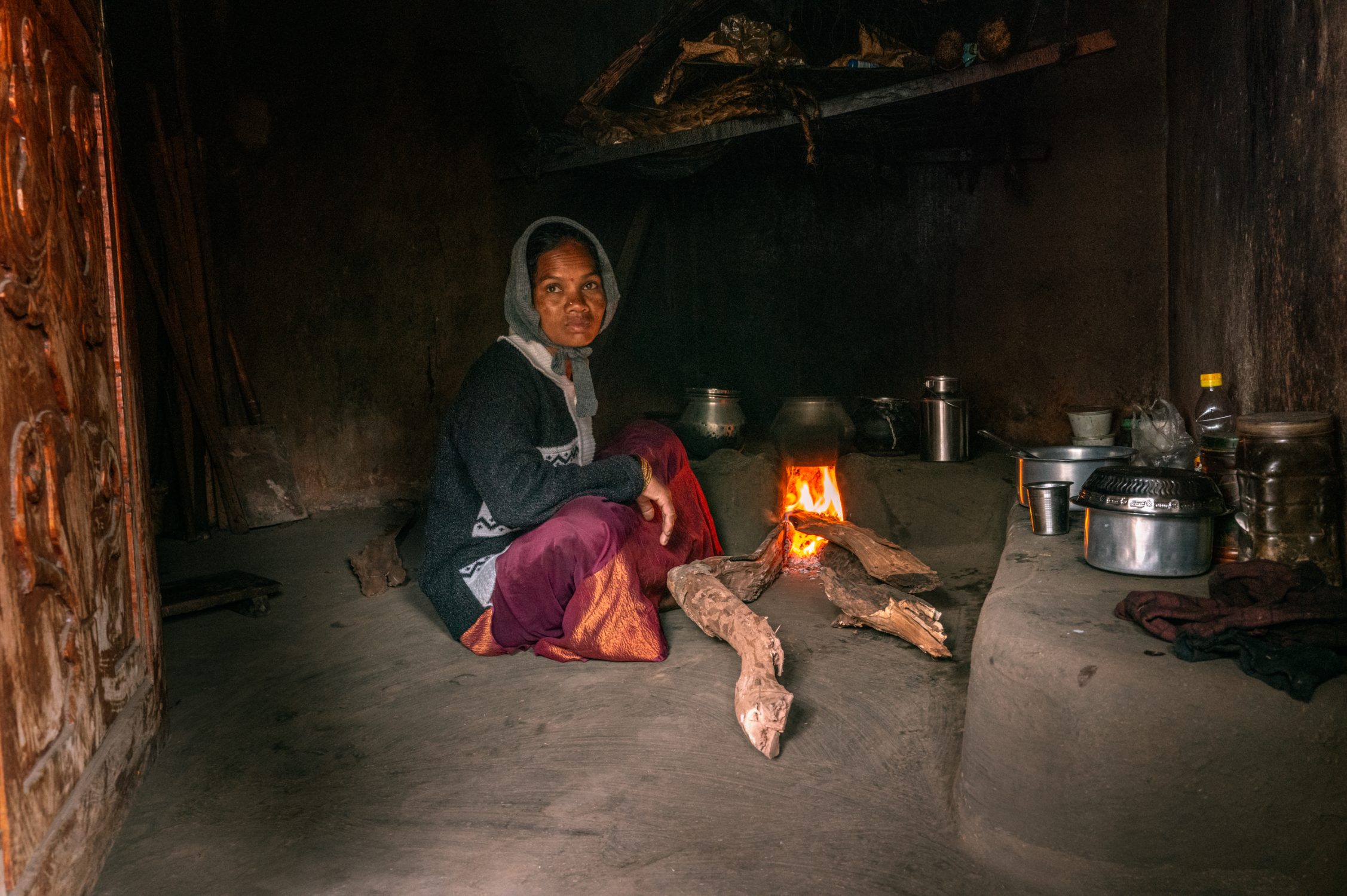
Araku Valley, Ukurbha

Araku Valley, Thudum

Araku Valley, Battivalasa
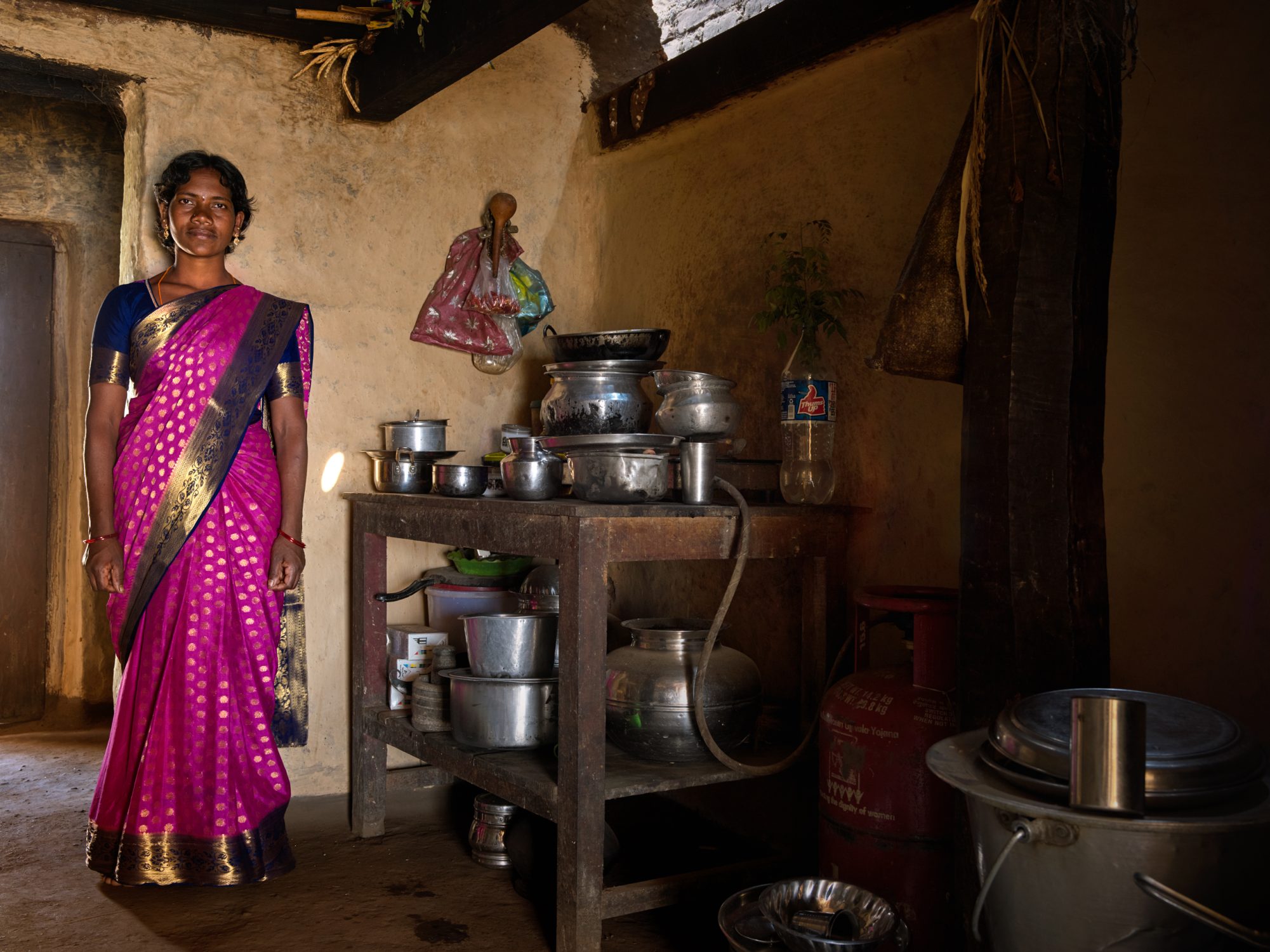
Araku Valley, K.Tadiput

Araku Valley, Mulyagalung
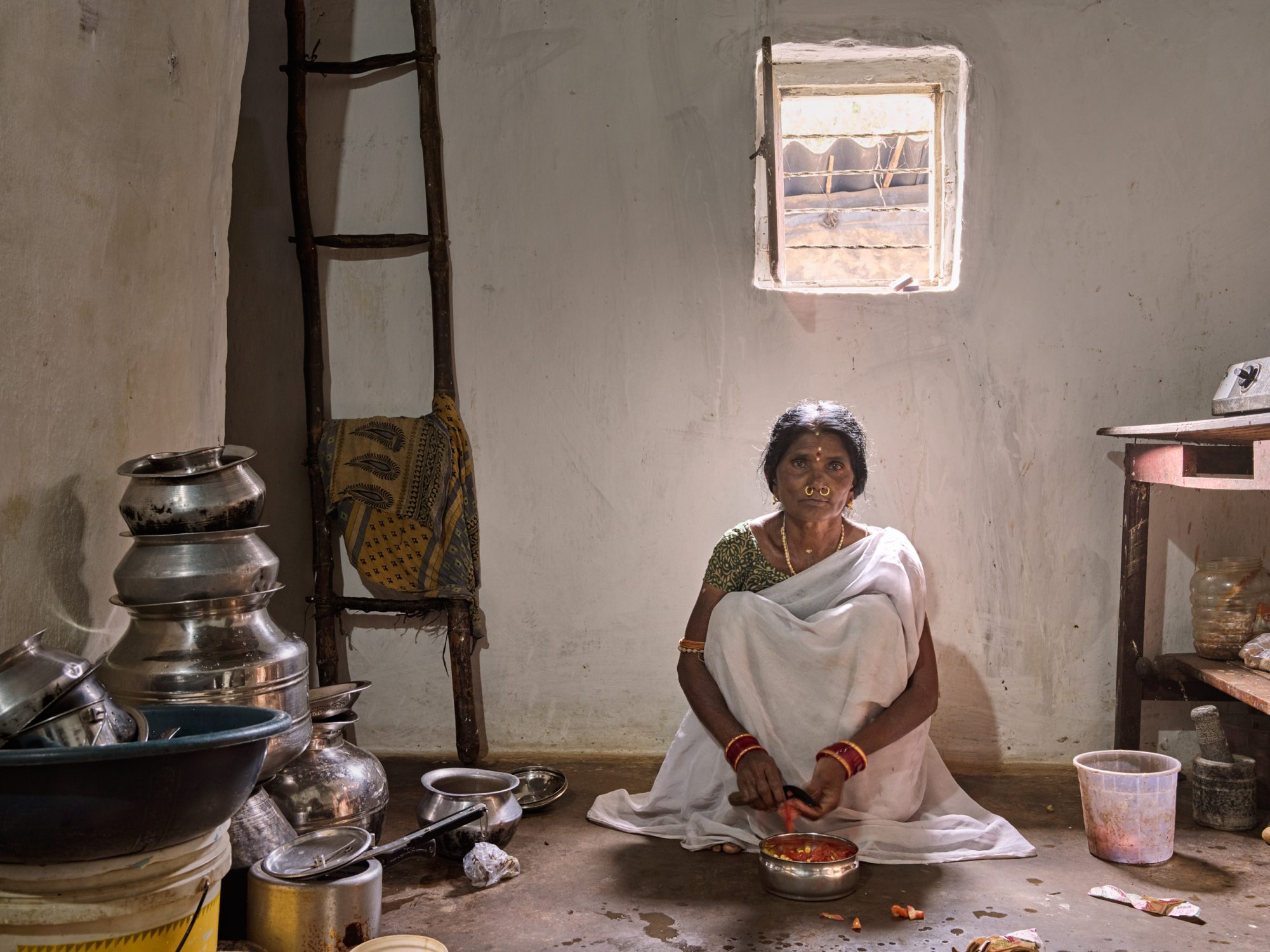
Araku Valley, Mulyagalung
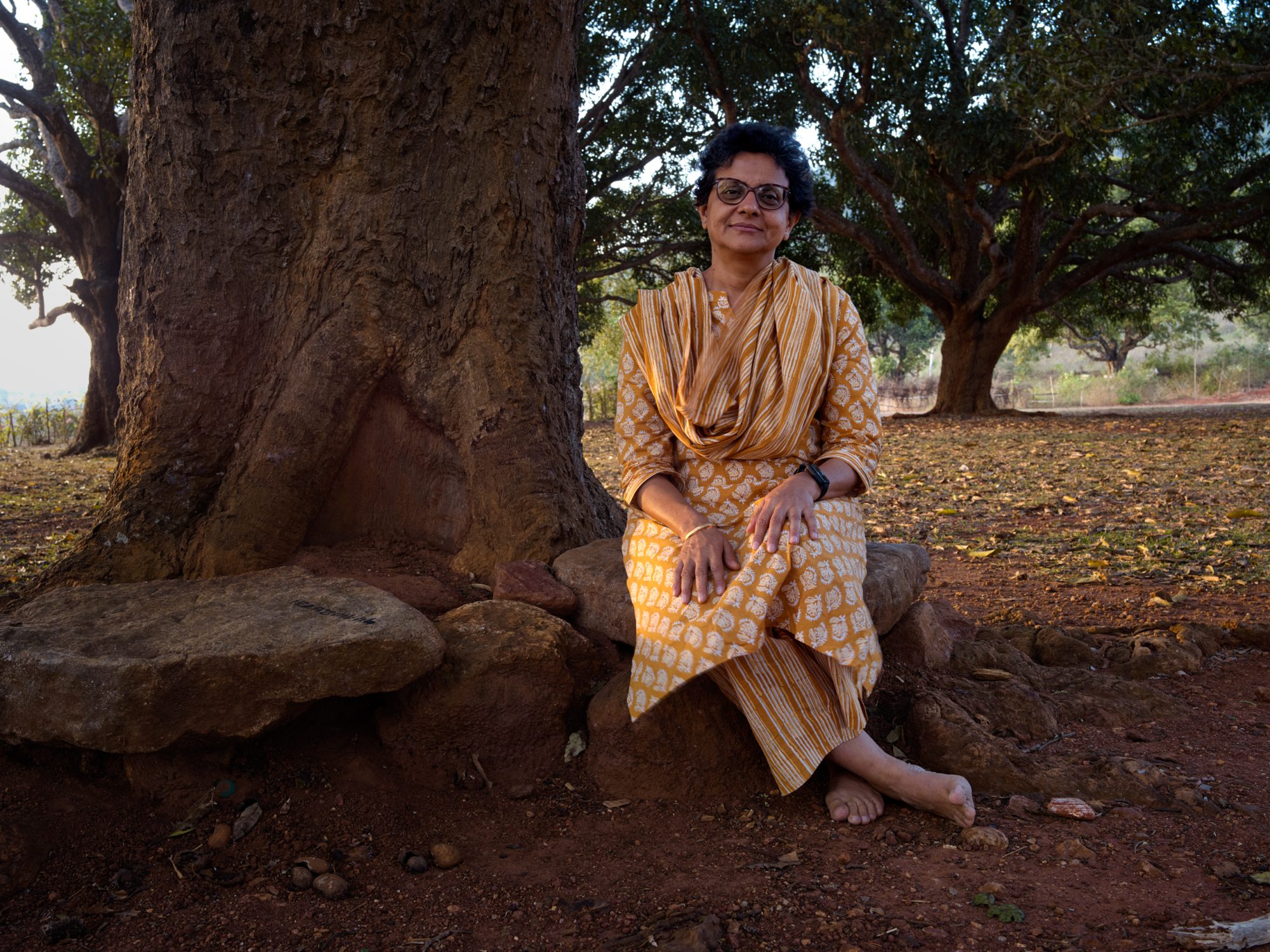
"Smallholder farmers in India are a large number."
Rohini Mukherjee
Head Partnerships and Strategy
‘Just to give you an idea, let’s say India has a population of more than 1.4 billion.
Of this, 70 per cent are people who depend on agriculture for a living. Broadly, we can call them farmers. Of those, 80 per cent are smallholding farmers.
So that’s a really large number. These are the people who feed us all in our country but they are also the people who face the most poverty-stricken conditions. While they’re feeding us, they don’t really have the ability to feed their children well. And I think our work with smallholding farmers starts there.’
We have selected two more stories that might inspire you.
